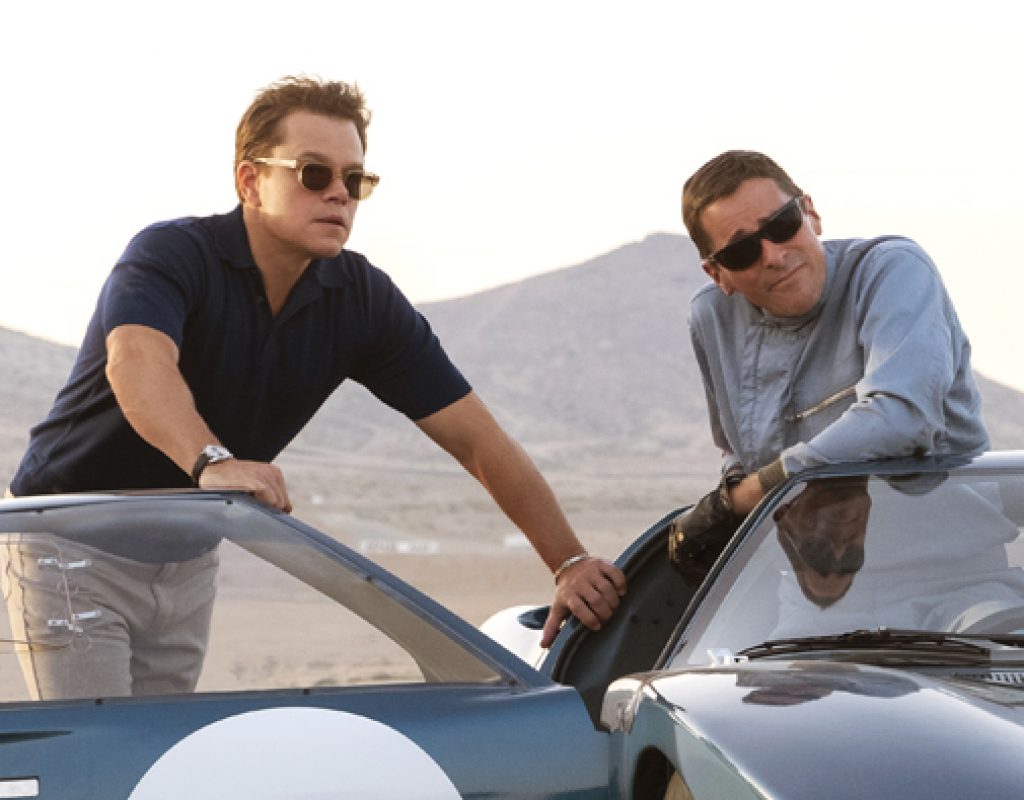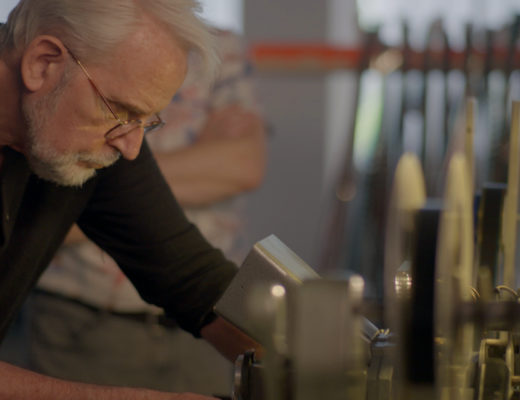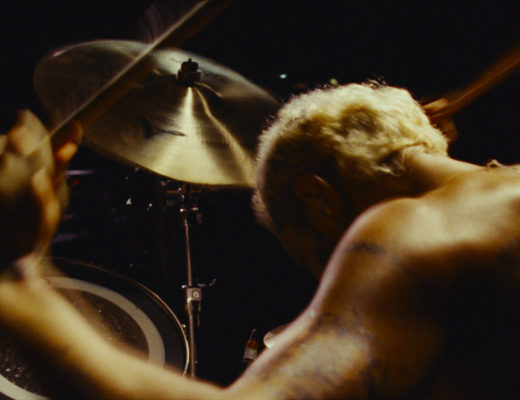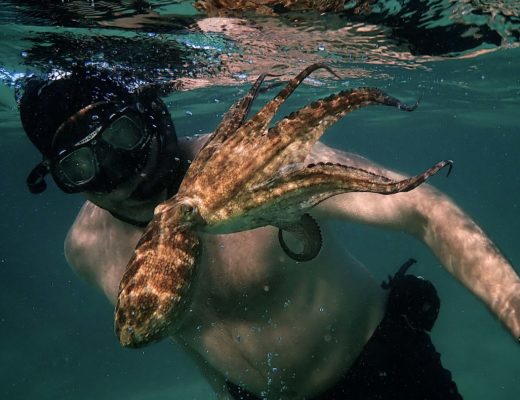Michael McCusker, ACE was nominated for an Oscar and won an ACE Eddie for editing Walk the Line (2005). He was nominated for an Australian Screen Editor’s Award for his work on Australia (2008). And he won the Hollywood Film Awards’ Best Editor of the Year for his work on the film we’re discussing today, Ford v. Ferrari. He has also edited films like, Deadpool 2, Logan, The Greatest Showman, The Girl on the Train, Wolverine and The Amazing Spider-man.
Andrew Buckland also was named Best Editor of the Year for Ford v. Ferrari. His work as an editor includes The Girl on the Train. Work as an additional editor includes Get On Up and Wolverine. Work as an assistant editor includes Captain America: The First Avenger, Crouching Tiger, Hidden Dragon, and The Horse Whisperer.
This interview is available as a podcast. (Subscribe to Art of the Cut on anchor.fm or wherever you get your podcasts.)
(This interview was transcribed with SpeedScriber. Thanks to Martin Baker at Digital Heaven)
HULLFISH: The editing made me want my old stick shift car back.
I’ve talked to a couple of people recently about narration in film and the last two people I talked to about it actually said there was no narration in the script. It was added later. What was the deal with narration in this?
McCUSKER: Well it’s pretty sparse. It’s only in these two bookend spots. It was actually in the script but it was not in the script as narration. It was in the script as an actual standalone scene that we took out because these bookends that were conceived just didn’t play right. It was sort of tangential and didn’t feel organic to the rest of the movie. But what is being said is, so we just used it that way.
HULLFISH: And what were those scenes originally? How did they play out or what were the visuals?
McCUSKER: The concept of it was that the whole movie is actually almost told in a flashback. It’s a recollection of his friend and he’s at a crucial point after his death where he’s trying to figure out the meaning of what just happened — their enterprise and their friendship — which I think is a great idea, it just didn’t play that way. It was confusing.
HULLFISH: I really love the visuals in the film as well. I mean some of the shots are just absolutely gorgeous. Were there times when you just said, To hell with storytelling, I just need to put in this gorgeous shot!”
BUCKLAND: You mean abandon storytelling and just use the shot?
HULLFISH: I never felt like you guys abandoned the storytelling but there are just times when it seemed like, “I’ve got to put this shot in. It’s just too beautiful not to have in the movie.”
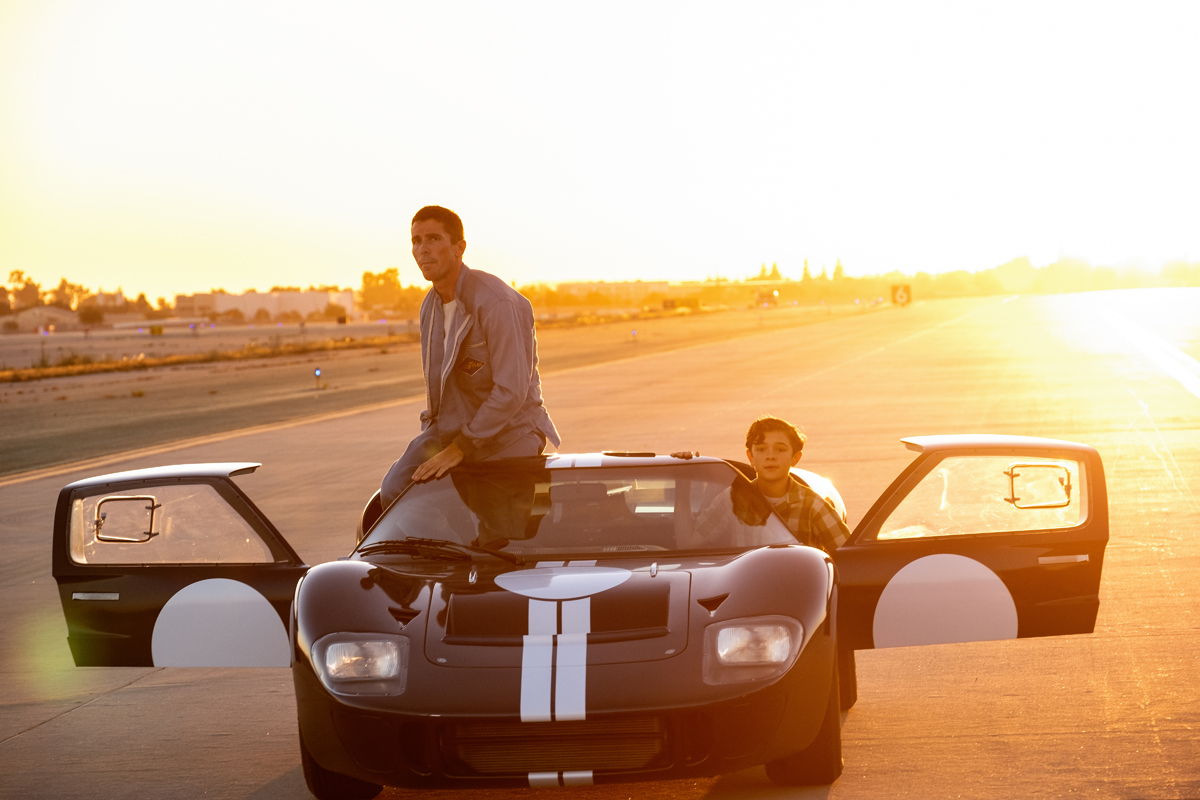
McCUSKER: So you luxuriated in the cinematography?
HULLFISH: Yes, I did.
McCUSKER: That’s great. You’ve got to do a whole podcast with Phedon Papamichael.
There’s a shot early on that I saw and it doesn’t strike you as this great piece of cinema but I really love it and it’s when Bill the inspector at Willow Springs has gotten his dressing down and then Shelby and Carroll continue to talk and there’s this great shot where Christian is framed to the right of the screen and Carroll walks in from the left and it’s just this beautiful profile of our two heroes. And I saw that shot and I was like, I gotta use this.
He’s got to walk into the shot where they share a completely balanced frame because to me it was emblematic of their relationship. And I also just thought it looked beautiful. They’re both wearing cowboy hats. It felt Western in a way. So I really liked that shot. It’s probably not a shot that people would say, “Well, that’s beautiful cinematography,” but it struck me that way. And it wasn’t hard to use. They’re in the middle of a conversation, so it doesn’t feel like I was jamming it in there.
HULLFISH: There’s this editing concept of eye-trace, where you lead the audience’s eye around the frame and cut to the next shot where the eye is in the same spot as you left it in the previous shot. In that scene at the beginning where Ford walks onto the factory floor and shuts it down, I felt like the eye-trace was almost perfect on every shot. Is that something you guys concern yourself with or is it more organic than that?
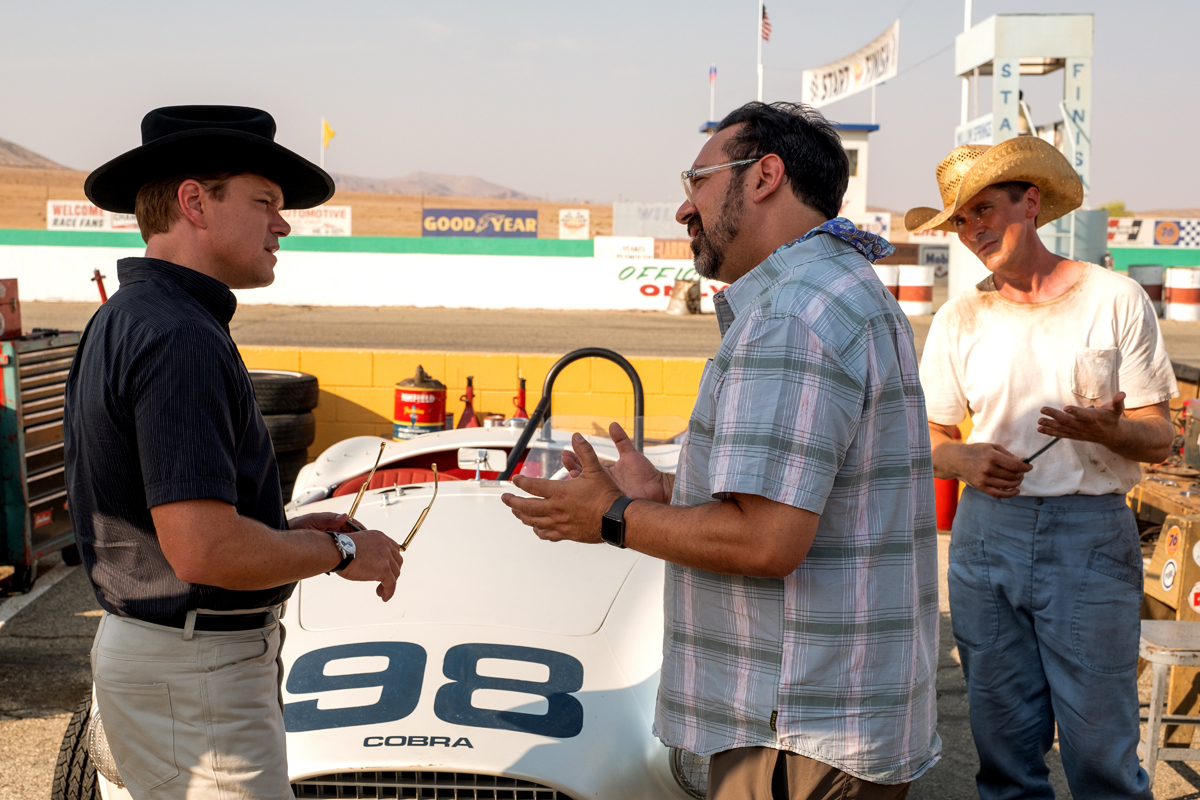
BUCKLAND: It was more organic. I think.
HULLFISH: There were a number of scenes later where my eyes were drawn in the frame to a point where, when you guys cut, my eyes were in the exact same spot for the next shot.
McCUSKER: I can say for myself I’m super sensitive to that.
BUCKLAND: Yeah, I agree.
McCUSKER: I’m cutting the movie as if I’m watching the movie. I don’t think it’s a revolutionary concept. I think other editors would comment the same way, but because I cut that way and think about that constantly, I’m thinking about what do I want to see next. And if I’m cutting to a frame and if the subject matter in the next cut isn’t where I think it should be I I get tossed out of the shot and I don’t want to do that.
Sometimes I need to cut to the shot that’s available to me and if it’s still bumping me, I’ll play one of our editorial tricks and resize it a little bit and move it a little bit so that your eye is going to the part of the frame you really want people to focus on. So yes, I think there’s definitely an intention to do that. A lot of that is also just great photography.
HULLFISH: In the race scenes, the sound design played a big part. What kind of sound tools did you guys have? Like a little sound kit of engine noises and revs and brakes and all that kind of stuff, that when you were making visual cuts — I’m assuming even at the early editing stages you were also really trying to make those edits work with audio as well.
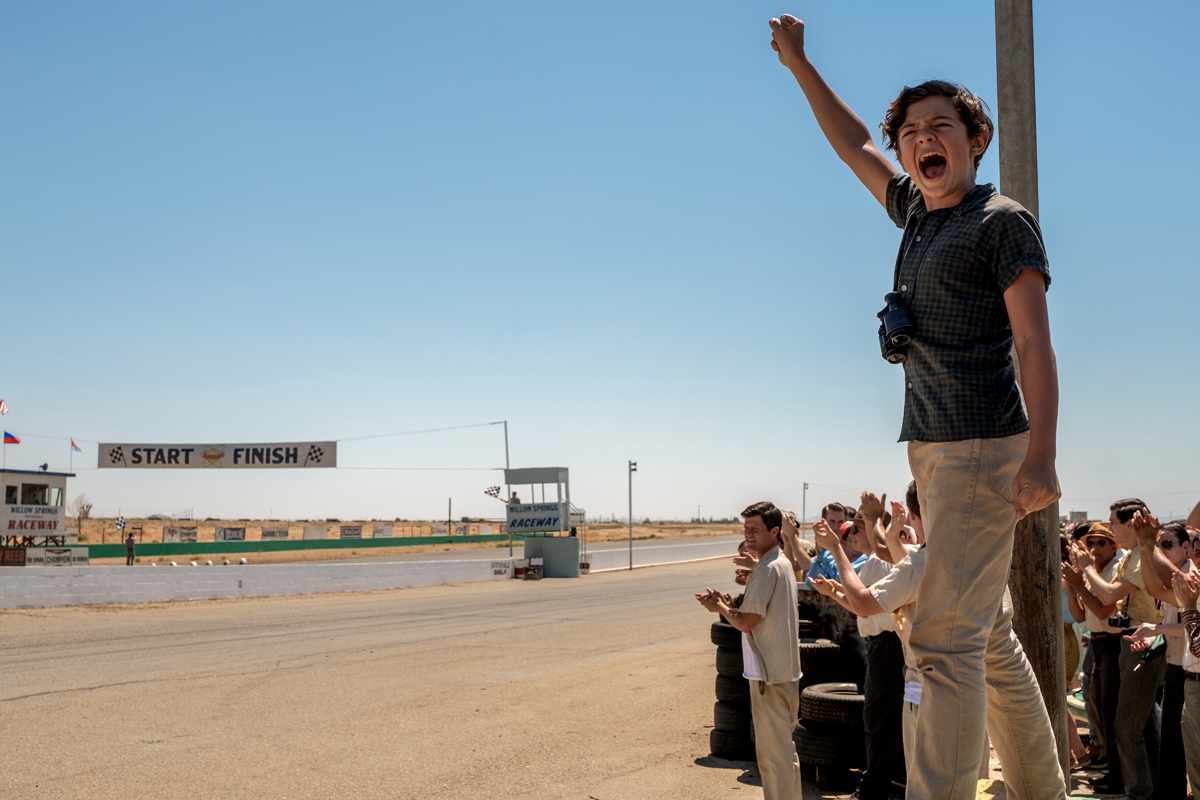
BUCKLAND: We were fortunate to have the sound team — well Don Sylvester actually — starting very early in the editing process. It was great to have Don on early and when we were working on a scene and we would complete a picture cut on a scene, he would very quickly help us put sound to that scene and give us the right sound. It wouldn’t be the actual car sound — the true car sounds of a GT 40 or Ferrari — but it would be good enough for us to get a sense of how the flow of the scene would go. It was very beneficial to have him start early with us.
HULLFISH: Did that sound ever change things for you when you heard the sound that you felt like you needed to change picture?
BUCKLAND: Oh yeah. Sure.
McCUSKER: There was no way to really cut these race sequences with sound in parallel. So for me, I just cut the race scenes MOS (without sound) and then sat down with Don and spotted them and we talked about what we’re gonna do and he provided us tracks. This is the first show we’re actually cutting in 5.1 and because we’re cutting in 5.1 we developed a plan where Don would provide us a series of stems.
We didn’t want to bake everything in together into a couple of 5.1 stems, so we decided that we’d do crowds on a stem and car interiors on another stem and car exteriors on other stems. So it allowed us to recut and reuse those stems, because I hate to be in a position where I recut a scene and then I’ve got to throw it through sound again just have audio.
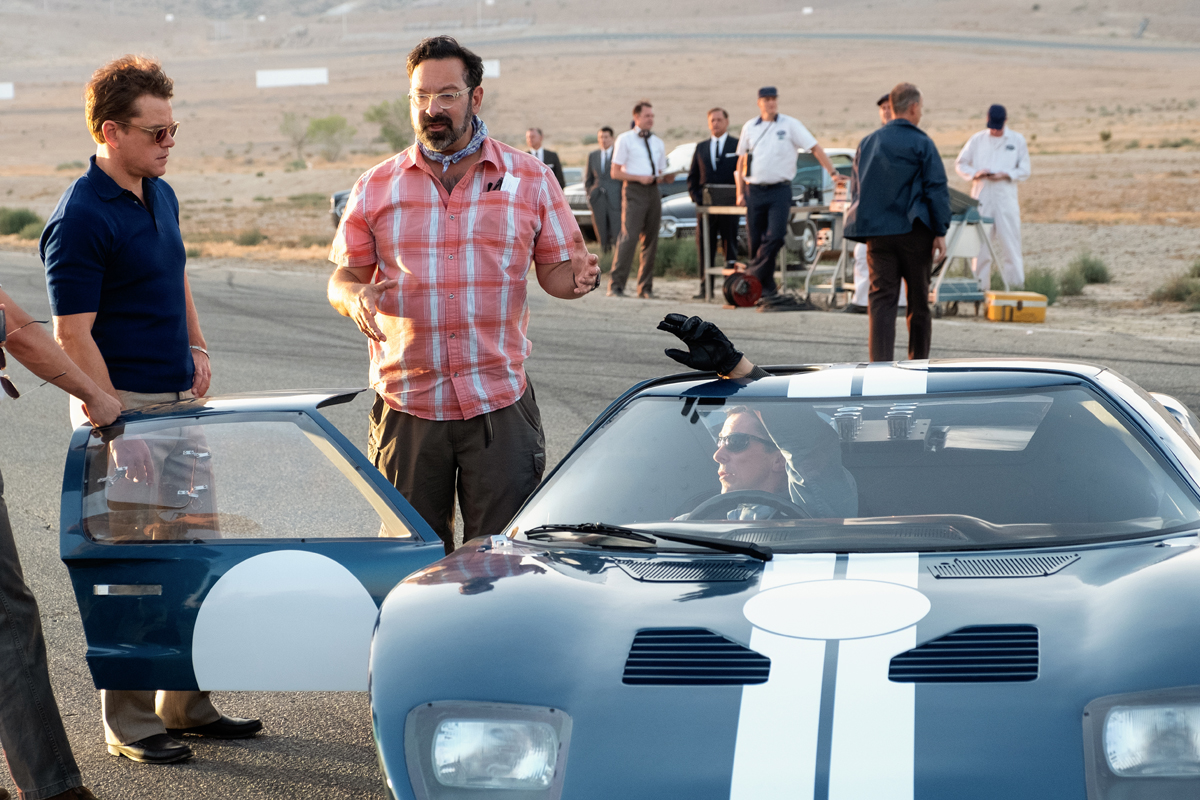
The way that we developed our breakdown of tracks — which we discussed early on — allowed us to use these tracks for a pretty good amount of time until we started to get in more developed sounds and actually the real cars. So that helped a ton and that was hand in glove with what Don was doing.
As far as cutting the scene initially, I was going for the picture, purely.
BUCKLAND: Yeah.
McCUSKER: A great example of how these stems worked was — very late in the game as we were getting all the footage in for Le Mans — they went out and shot Daytona. So we were just buried in race footage all at the same time. Two of the biggest races in the movie were shot back-to-back. So I took over Daytona. I’d been doing Le Mans. I cut that scene. I cut it completely MOS. Then instead of handing it to Don — because Don was dealing with trying to catch up with Le Mans — I handed it to Drew, who had some free time, and I said, “Just use the stems from the La Mans and create the race sounds for Daytona.” It worked like gangbusters and that’s what our temp tracks were for a while until Don got a chance to really do dedicated sound for that.
That was the entire point of setting up the stem strategy: to be able to reuse stuff and not have it be just a one-off.
BUCKLAND: Right. We could repurpose those sounds in other races.
HULLFISH: So the production sound that you were using was exclusively dialogue or no?
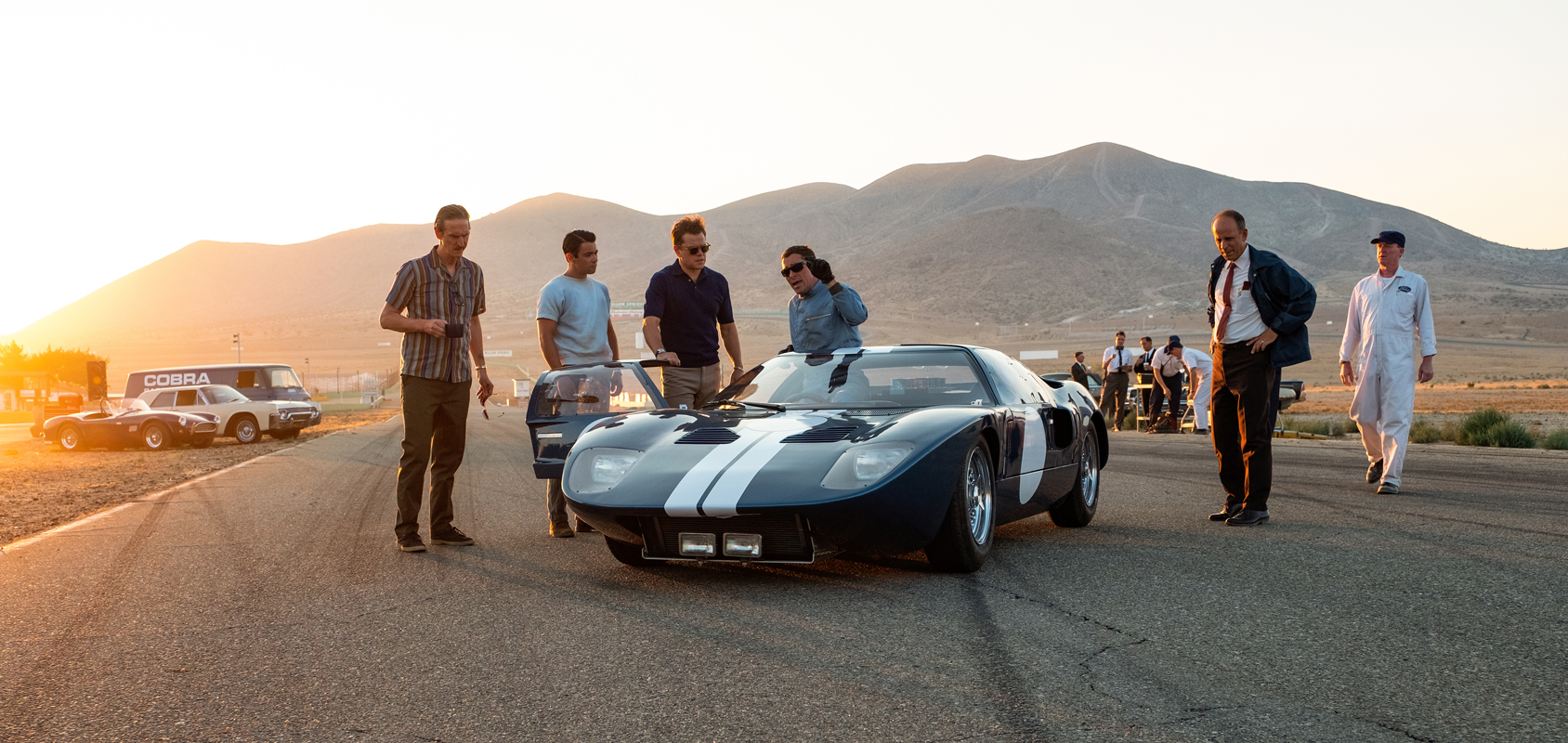
BUCKLAND: No. For Willow Springs — the race in Willow Springs — actually they had a live mic during the racing and the first sound cut of that race was the production engines. They were the wrong engines technically, but they were engines and they allowed you to experience the car.
The first cut of that was strictly production sound before Don could get his hands on it.
HULLFISH: Was that the first race where you guys intentionally pulled the sound out when Ken Miles kind of gets into the zone? Can you tell me about that decision or why you did it? What the thought was? How it was done?
McCUSKER: I’d love to say that it was our idea.
BUCKLAND: Yeah. It wasn’t our idea.
McCUSKER: And I’d love to say that it was Jim’s (director James Mangold’s) idea.
BUCKLAND: And it wasn’t his either.
McCUSKER: It was Christian Bale’s idea.
HULLFISH: WOW!
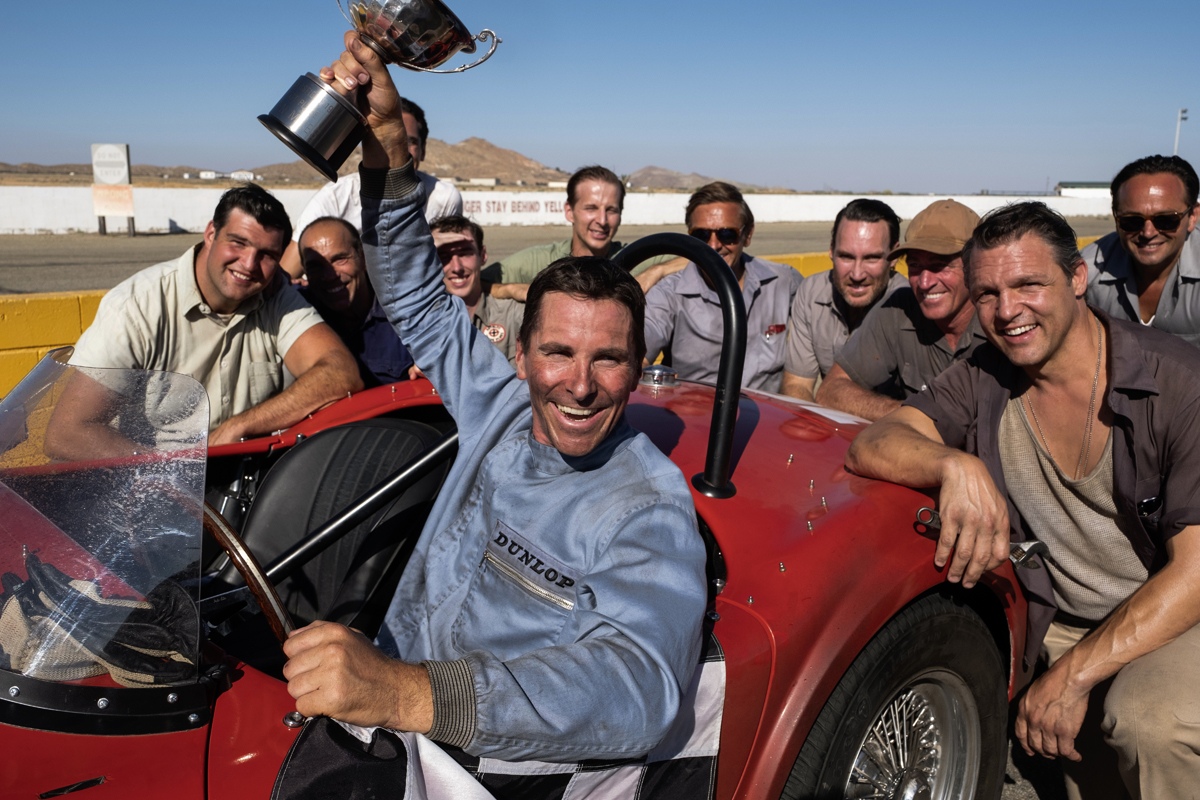
McCUSKER: He understood the script. We also use that concept again at the end of the movie at Le Mans. And Bale came up with this idea of using this in the other races to show the concentration of his character. And we just looked at each other and said, “That’s a fucking great idea.”.
BUCKLAND: We kind of started it in the very first opening scene with Shelby driving in the opening scene of the movie where there is a sense of going inward and he’s hearing the voice of the doctor peeking through. It was a response from that because it’s an idea that we start there and we end the movie that way with Miles’ death. There is sort of an internal feeling of that for that scene.
McCUSKER: When you’re working with guys who can come in and look at a movie and not look at it just from whether or not their performance is working and look at it as a movie, it’s pretty amazing. Both Christian and Matt were really tuned into like the filmmaking. We knew we had to do that and had to figure it out.
We developed that same moment in Daytona when we go into his face and we take all the sound away. Once we applied it we thought, “We can do this in Daytona.” That wasn’t written to do that. We just created that in Daytona with the inspiration from what Christian had said and it works because basically it’s the racer’s mind. For a moment, it allows the audience to experience what it is — where their focus is. And so it all is resonant and organic and feels absolutely right for the movie.
HULLFISH: Let’s talk a little bit about spotting music. I noticed in the Willow Springs race, for example, that there is no music until a specific point. Can you talk about that decision? What makes you feel like you need to bring in music at a certain point.
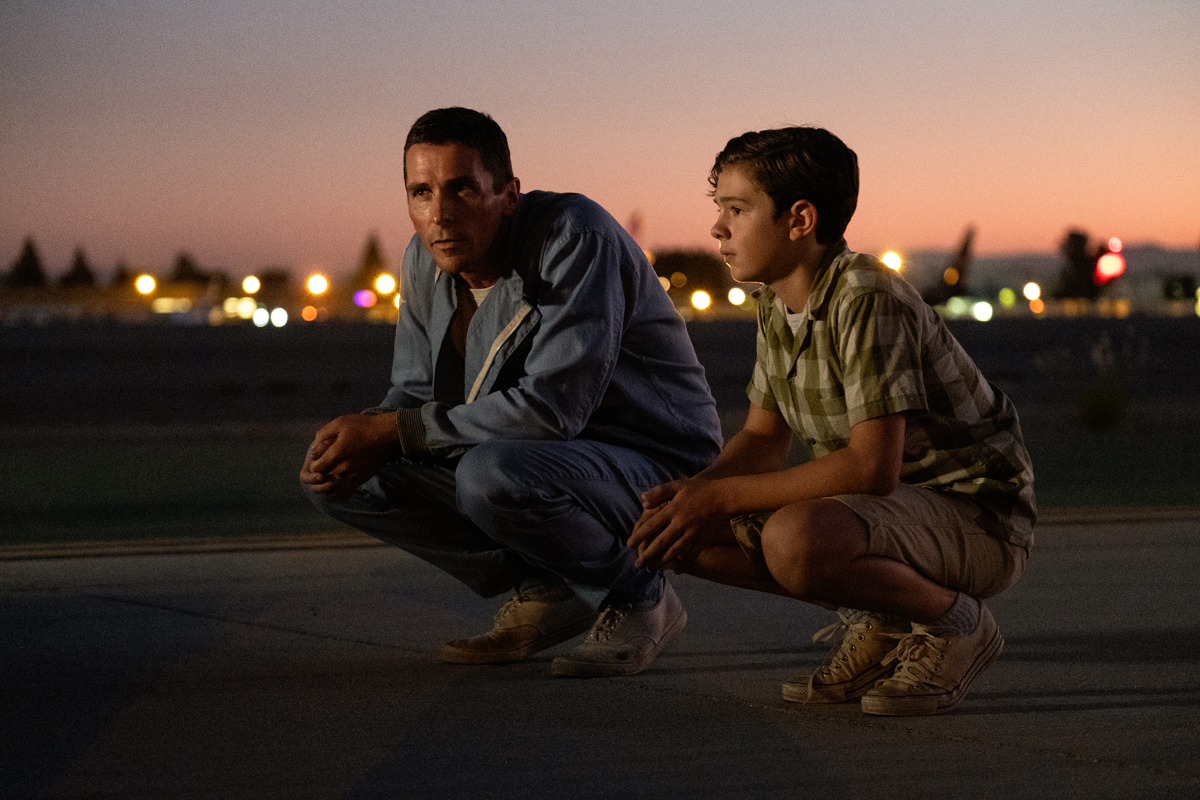
McCUSKER: In general, with Jim — and one of the aesthetic choices that Jim, Drew and I share, and also our music editor, Ted Caplan — is, for the most part, allergic to music that leads the scene. To be really blunt, that drives us batshit. I don’t like it. Jim doesn’t like it. If your scene is working, then the music — to me — is always much more satisfying if it’s developed out of the character and it’s not cueing you to feel something before the scene is actually begun. So that’s our starting off point — not only with this movie — but if you look at Jim’s work over the years, that’s the way this the spotting we find the spotting. That’s where we kind of default to.
BUCKLAND: In that Willow Springs scene, the music comes in at the point when we realize that Miles is catching up to the lead car and is one of two remaining cars in the lead and we have this battle between the two cars. The music comes out of that moment — that excitement — as opposed to beginning the scene with music, to say, “This is gonna be an exciting race and here’s the music!”
For me, personally, having music there the whole time has this opposite effect of actually disengaging me when there’s music applied that way. And I think when it organically comes out of a true experience that this is actually an exciting moment and the music is generated FROM that moment, I think it really adds to the experience of that excitement and pulls you in even further as an audience.
HULLFISH: And in those races, the engines are the music of those scenes.
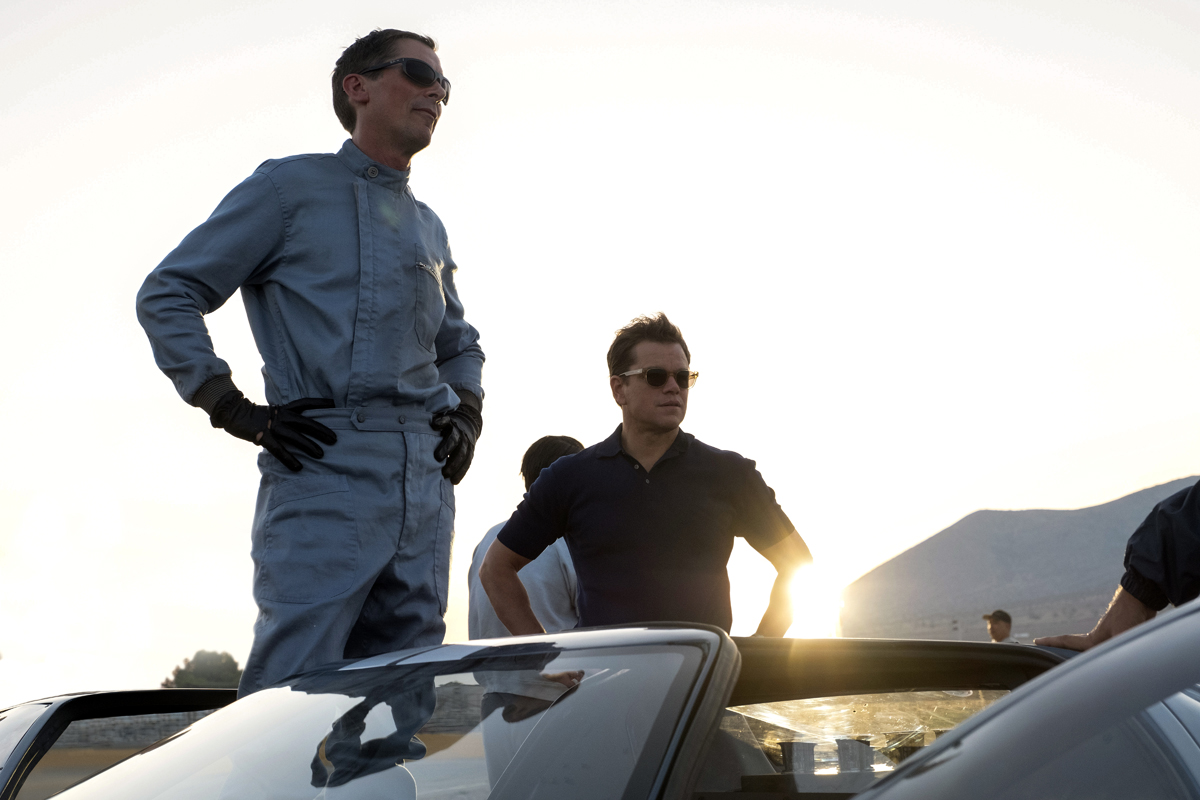
McCUSKER: They are. We work with Ted Caplan, who is the music editor and he works closely with (composer) Marco Beltrami. He’s on almost as early as Don is doing the sound design. So we’re developing the music track very early. It’s great to have him involved. It’s great that we have a studio that supports that — that allows us to have these guys working early. I mean it’s not such a new idea. There’s a lot of front-loaded processes right now, but these guys are in really early — we’re getting them at the top of production. They were there from almost the very beginning.
Ted’s background is that he’s a musician himself and he also came from sound design. So he’s got a very, very acute understanding of where the bandwidth is and how to share music and he’s very capable of communicating that to the composer.
Marco Beltrami has done a bunch of Jim’s movies. The one thing I keep telling people is that this movie is about friendship and it’s about camaraderie and it’s about these two guys engaged and in achieving this goal. That’s what we’re doing as a crew. We’re all very good friends and we’ve worked together for a long time. And there’s great affection and respect for each other and we love working together. This crew has been together for a long time. Don has done every movie Jim has done for 15 years. I’ve cut Jim’s movies for the last 15 years. Ted’s been on for the last 15 years. Marco’s done four of his last six movies or five of his last six movies, so we all know each other very well.
HULLFISH: Tell me a little bit about that relationship. You have been with James for 15 years now. How does that help? What’s the difference between working with someone with that kind of relationship and working with somebody new?
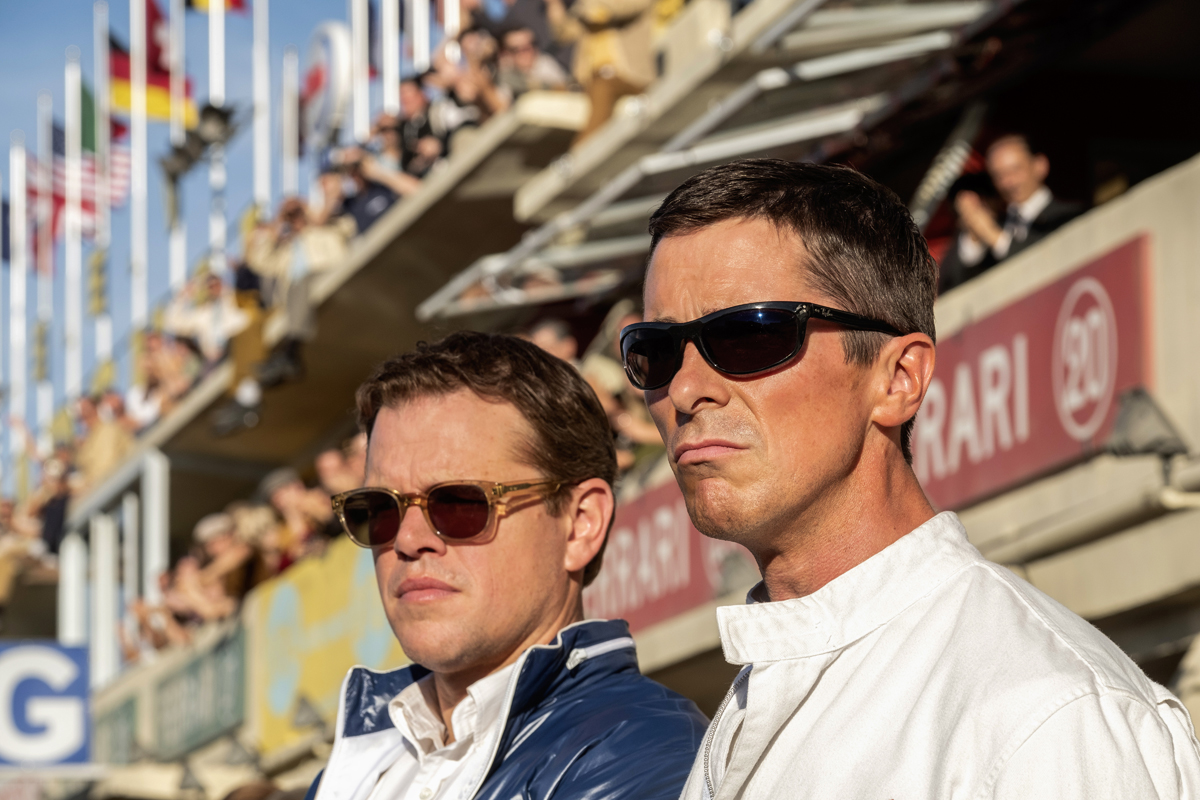
McCUSKER: Just trust and getting to know aesthetic. That stuff has been established. The trust is there and we understand each other’s aesthetic. When you go work with somebody you haven’t worked with before, you start over. It’s a new thing which is what makes the career exciting. You get to go and have a different relationship, but there’s also this other thing where it’s like, “If it ain’t broke don’t fix it.”
The trick is not to let it get stale and it hasn’t gotten stale. We challenge ourselves. We challenge the movie. We’re all challenging the movie all the time. Jim’s challenging it. We are challenging it. We question it. Sometimes we joke about it. Make fun of it — just in a way to keep our objectivity.
Among other things, Ted is actually a screenwriter and a novelist. So he’s kind of the full package in terms of the cinematic experience. So we all approach it from a broad perspective. It’s not as if Ted’s got this narrow perspective of just guarding the music or Don is just guarding the sound effects.
Everybody talks about the movie in general and talks about how the scenes work or has ideas about the editing. It’s just mutual respect. I don’t get defensive about that. I might get annoyed, but I don’t get defensive. (Laughs) And they don’t get defensive when I have things to say. So everybody’s commenting on each other’s work. It’s one of the reasons why I think that we all want to continue to work together, not to mention the fact that Jim picks really good projects.
HULLFISH: There’s a scene where Iacocca and Ferrari kind of get into an argument. It’s kind of the climax of that relationship early in the movie and there’s a lot of overlapping dialogue. Is that something that you guys had to create? Or did they overlap their dialogue and you had to cope with that?
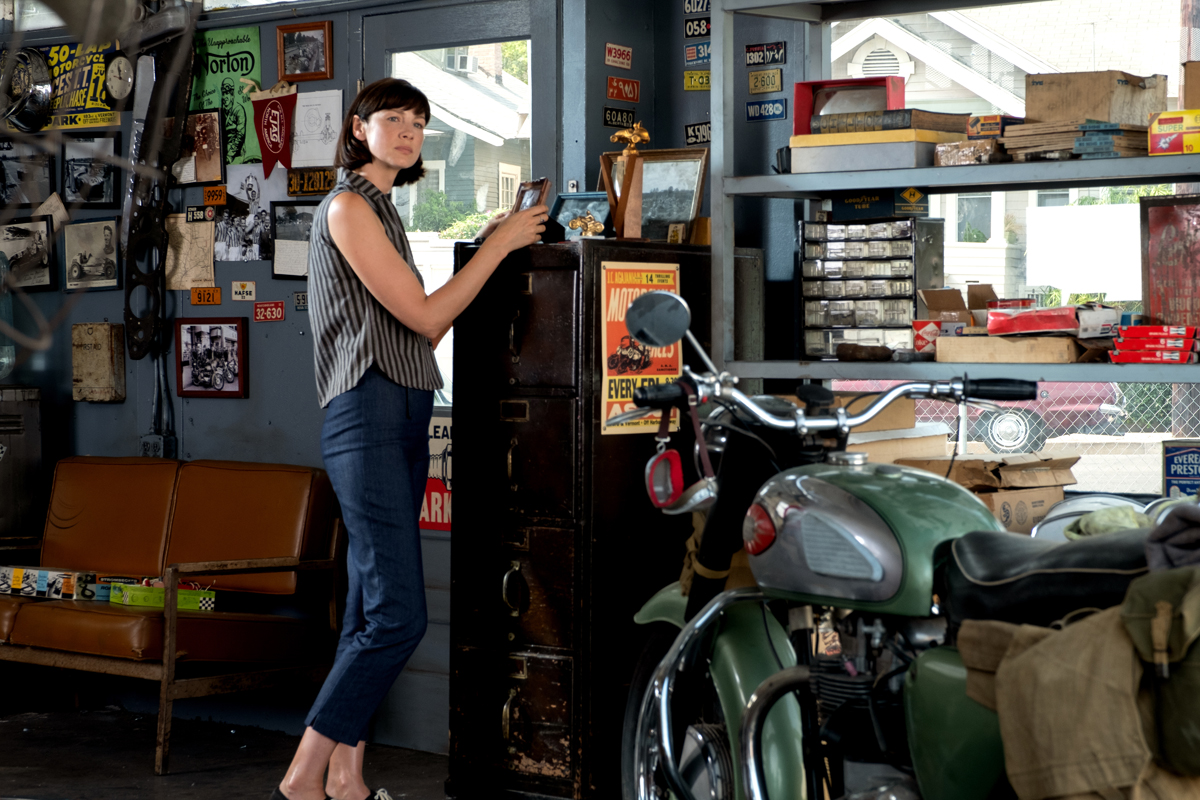
BUCKLAND: They overlapped their dialogue and it wasn’t problematic because it was the true experience of that moment — how any moment like that would occur — people are talking over each other. There was a moment that was a little tricky now thinking about it. It’s when Enzo is speaking in Italian to Iacocca and the translator is speaking as well to translate for Iacocca. That was the only trick: to carve out a little space for that to happen and feel natural. That was the only difficult moment.
McCUSKER: The rhythms of that were tricky.
BUCKLAND: Yeah.
McCUSKER: Because you didn’t want to leave too much room, right?
BUCKLAND: Exactly.
McCUSKER: It’s a great scene, but then Jim wanted to tighten it so that you got the energy of the emotion rising — which is difficult because you’ve got three people talking.
BUCKLAND: Exactly. And in the original construction of the scene, the translator always spoke after Enzo. So she was translating for him at all times and there was a moment when Jim said, “I don’t think we need to do that all the time. Once we’ve established that once we understand basically how that works. So we don’t have to lean into that all the time.” And that helped us to really tighten that scene.
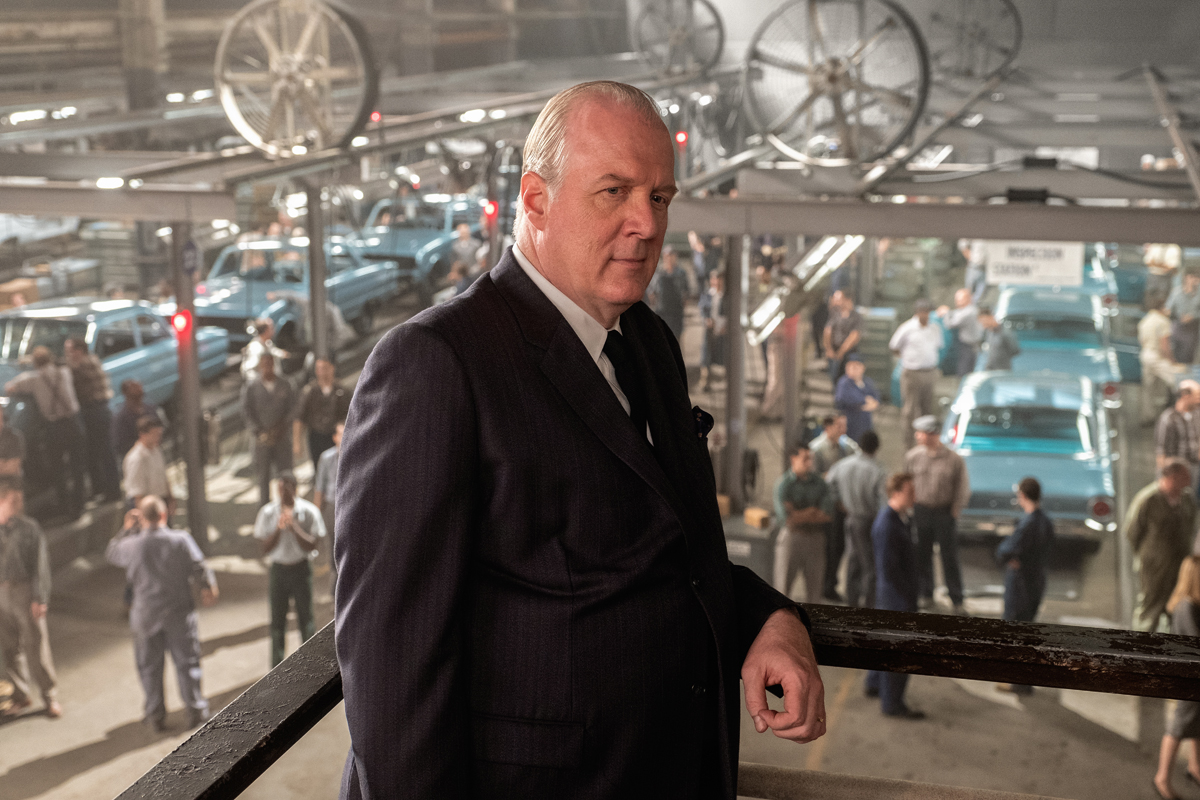
HULLFISH: That’s exactly what I thought would be difficult in that overlapping dialogue. It seemed like a tricky scene to cut.
One of the things that I am really interested in because when I put music in scenes in the assembly you’re usually working on a scene that’s not connected to the next or previous scene. But there are a bunch of scenes where music carries from one scene into the next. Can you talk about how or when that happened?
McCUSKER: That’s where having Ted on early is extremely helpful. I really love to pick music. I really love to try to find the sound of the movie musically. I like to be a part of that process, but this was such a complex movie that we didn’t really have the time because you have to listen to so much.
If you were to take all the sound out or just listen to the music soundtrack of this movie you’d wonder: how is this all the same movie? There are three distinct genres of music. There’s rockabilly surfer rock that’s playing for our heroes in the Southern California atmosphere. There’s a slightly jaunty, almost loungy jazz feeling that’s playing Detroit and the Motor City and the intrigue of the executive game-playing and politics. And then there’s the score that that grows into what is the racing score and becomes a little bit heavier, more rhythmic. We didn’t know it was going to be that way. Ted didn’t know it was going to be that way. It took time to find that. So having Ted on, it allowed us to find that in a pretty organized fashion. As far as playing things out more like a sequence of music rather than just the individual scenes, I’ve been stuck in that situation before — where I’ve temped out scenes and then I have to put the scenes together and now I’ve got a problem because of the music shifts that aren’t anticipated.
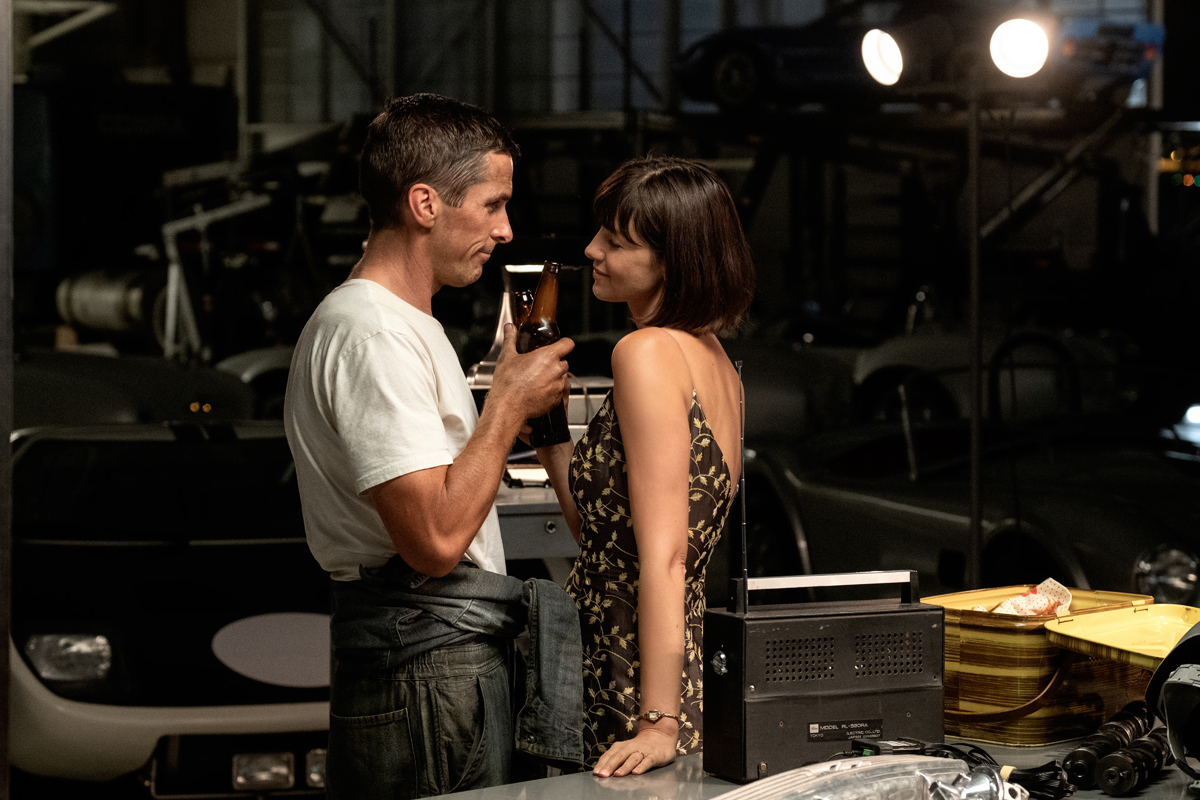
In this movie, because we had Ted on early, we just cut the scenes and didn’t worry about that. And then once we cut enough together that’s when we handed it to Ted. I wouldn’t just hand Ted an individual scene. When I felt like I had a section of scenes together — and I think that Drew can speak to this also — that’s when we said, “OK, this is a good enough section” to hand to Ted and he’s got enough real estate to work with to really create a holistic sound throughout.
And in this movie, it’s more prone than it is in other movies because it’s an ensemble piece and there’s a lot of stories working together so we didn’t endeavor to try to find a musical cue for everything.
HULLFISH: There’s a funny fight scene that I think has been in most of the trailers or people have probably seen. I loved the “effort sounds” in that. Was that actual production track? Or did they go back and tell Christian and Matt to sound like they’re having a stupid non-fighter-guy-fight?
McCUSKER: It was mostly after. It was ADR. That was a tricky sequence. It was a tricky little scene to cut and it was recut a few times. Don Sylvestri kept saying, “This is going to work once we get some ADR in there. Once we bring them in to do looping.” Jim was never really fully satisfied with that scene. We kept cutting it shorter and shorter and then finally they went into looping and we edited in the loops and it just changed the scene.
There’s some visual stuff that’s funny, but what they’re saying to each other and the efforts and whatnot is what makes that scene work really, really well. It was tricky in terms of the edit because it was really a freeform fight. They had extraordinarily loose choreography.
As I was cutting it I realized that I had Batman fighting Jason Bourne in a scene where there’s all this “grab-assery” in a completely anti-fight fight.
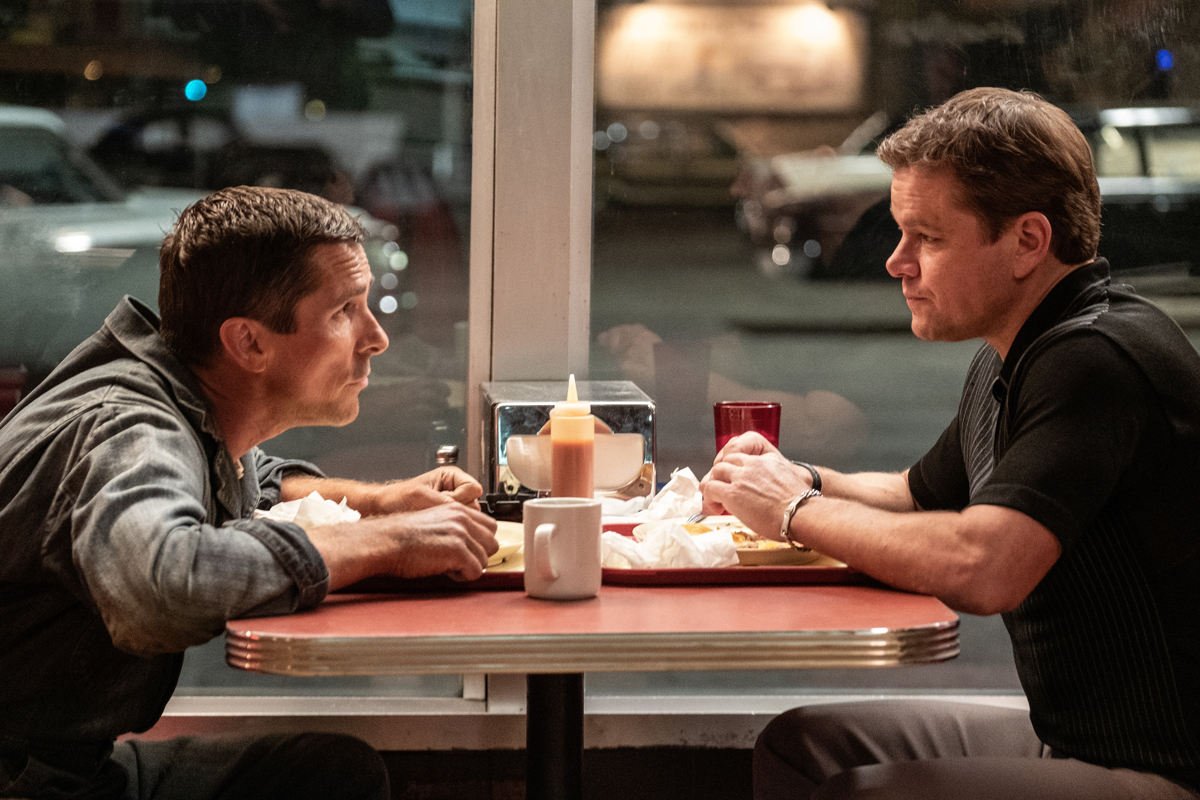
To Jim’s credit, he doesn’t ever want to wink at the audience and say “Isn’t this funny?” So they shot it straight. They weren’t trying to be funny. I think the funniness comes out of the legitimate feeling that these are two friends who were frustrated with each other and are just taking it out on each other but don’t really want to hurt each other.
Somebody said to me, “Those dailies must’ve been hilarious.” No. They weren’t really. They weren’t trying to be funny.
HULLFISH: I thought a lot of the humor was from the efforts and the sounds. I would’ve been shocked if you’d told me that was production sound, to be honest.
I wanted to discuss a oner that’s in the aircraft hanger with Matt and Christian just talking about how high risk their idea was. Was there coverage? I loved it as a oner.
McCUSKER: It’s right after the car was blown up?
BUCKLAND: Yeah that was actually designed.
McCUSKER: Which is a fancy word for saying there is no coverage! (laughs)
BUCKLAND: I think there were eleven takes.
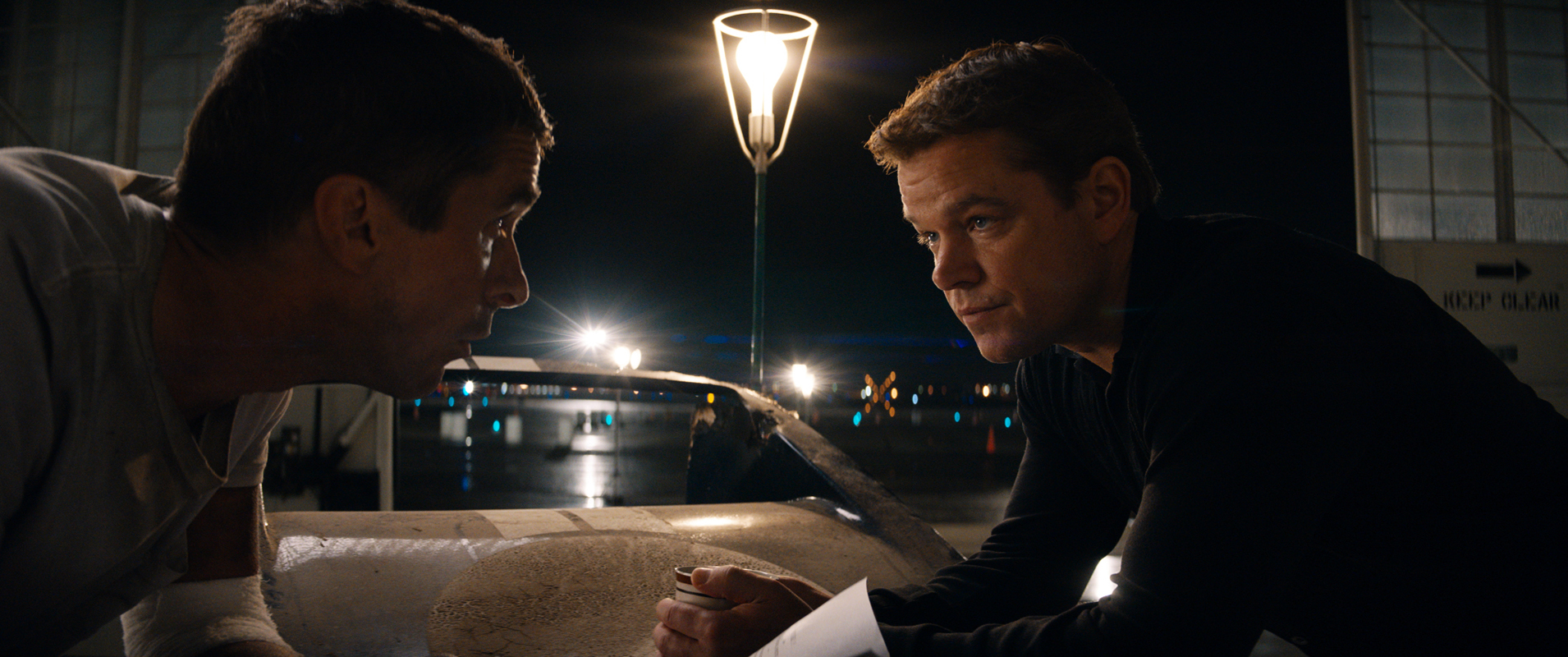
HULLFISH: No coverage. That’s very interesting. And was that truly one take or did you do a split or anything like that?
BUCKLAND: No. That was the that was one take unmanipulated.
McCUSKER: This is where Jim so understands the format that he’s working in and understands who he’s got sitting there in front of him. Those two guys are fucking great! Why are any of us on the other side of the camera gonna get in the way of two great actors having a scene like that?
BUCKLAND: Exactly.
McCUSKER: Including Jim. He’s not invading. He’s just allowing these guys to have the conversation. I think it’s why actors want to work with Jim. They actually get to act for long stretches. It’s not just piecemeal.
HULLFISH: Tell me a little bit about the scene where Henry Ford II gets in the race car with Shelby. That is just fantastic.
McCUSKER: We call that the “Ford joy ride.” Jim got great actors for this movie. Everybody is inhabiting the characters in ways that doesn’t feel like anybody’s acting. It just feels like people are just being themselves. Matt is inhabiting is character in a way that I don’t even see Matt in the movie. I feel that I’m watching Shelby.
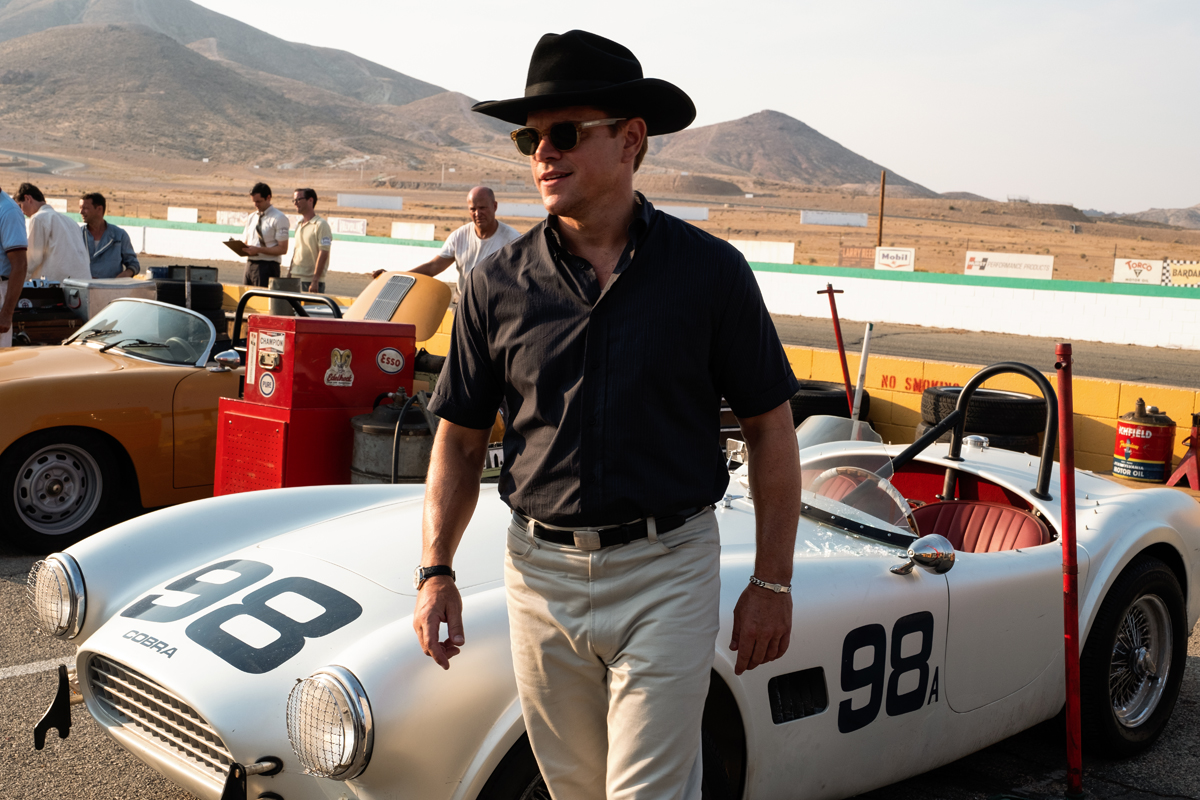
But that scene in particular — the trickiest part of it was the scene before the actual joy ride begins with Beebe being locked into the office. As far as the actual joy ride, the tricky part was working the slalom part with the barrels out on the tarmac, because all those barrels are digital and everything out there was just shot in a wide-open space and we had to add it after the fact.
That was a kind of second unit handoff with first unit and the first unit driving stuff of the guys in the car wasn’t exactly matching the second unit so it was a little tricky in terms of the slalom work, but we figured it out. I think it works great and you’re so invested in what the characters are doing. If we’ve got people saying, “Well that doesn’t work right because the background’s not moving right!” then we already lost. I really am happy with it.
And then when it’s over any and Ford burst into tears, we just had to stay out of the way — not make any cuts — just let it be. The best cut is not cutting.
HULLFISH: To see the actor’s face as that emotion wells up within him is fantastic.
Talk to me about intercutting the race at Le Mans with Miles’ family watching on the TV back in California. Was that intercut as scripted or did you find you needed to change some of that intercutting? Can you talk about the difference between scripted and non-scripted?
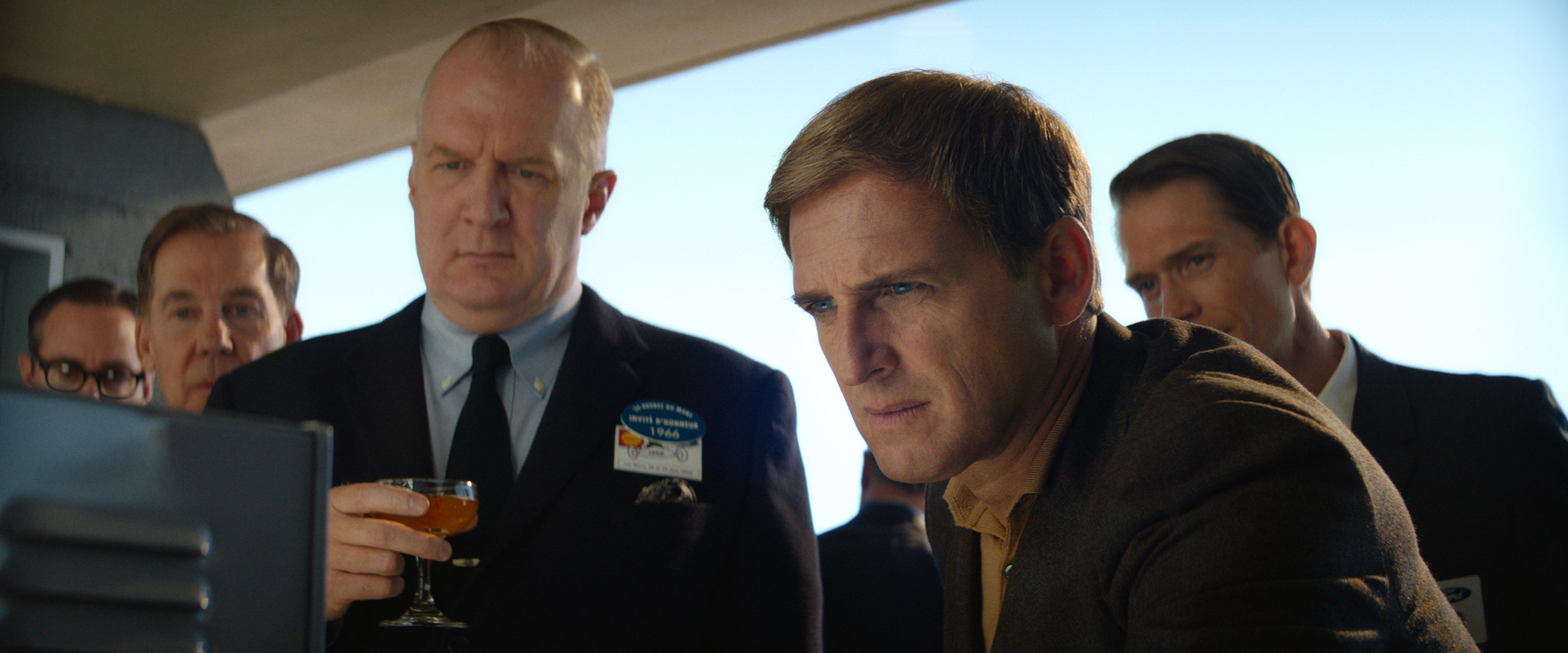
McCUSKER: The movie is actually a four-act movie. Le Mans itself is its own act. It’s 30 minutes of racing. We understood very early on that sequence was just gonna be incredibly complex to try to piece together and figure out in kind of a theoretical way. So that’s where we deployed most of our previs process: to figure out that sequence and figure out rhythms in terms of doing the intercutting.
So I was on the movie very early. I was on the movie almost two and a half months before they started shooting because I was working with the previs team and Jim in developing that sequence because that was our moneymaker. We were all very cognizant very early on that we couldn’t talk about Le Mans for almost two hours and then not deliver on the promise.
And the trick of delivering on the promise is making something exciting enough without being boring and redundant. We couldn’t make a race scene which was just all about going around the track. Jim was very, very aware of that, so developing it in previs allowed us to figure out where we were thin on story, add some plot where we didn’t have it, and figure out the intercuts back to home and figure out where we needed to go into the pit. Not to mention just developing how the actual race shots were going to work.
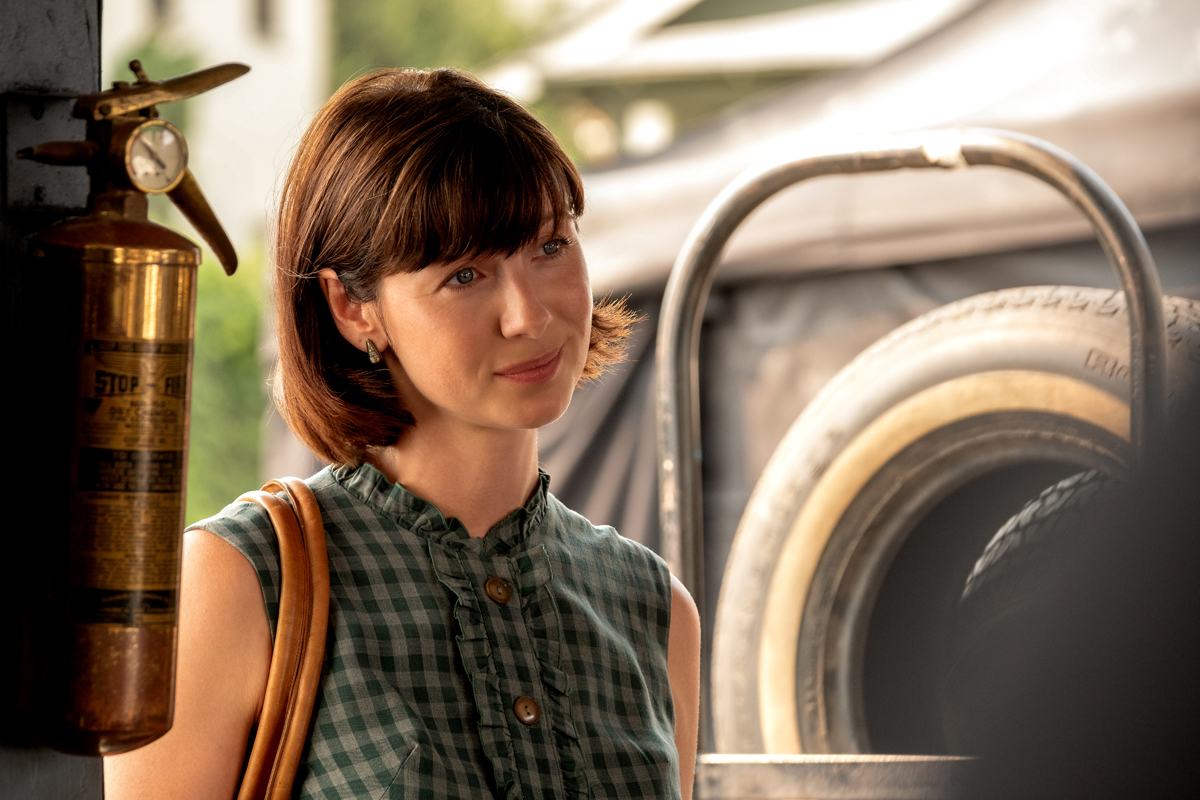
It actually became a road map for our production units to go out and shoot the racing. They hewed very close to what we were doing in previs. It wasn’t just theory. Once the actual footage came in, we just started placing it in where we had developed in previs. The trick at that point is: did we get it right in previs? And we found that we pretty much did. The cuts to the pits were what was developed in previs. Where we went to the house was where we had planned to go to the house.
That’s kind of a testament to modern cinema and how you shoot these sequences. In the past, you’d just shoot all this stuff and figure out how you’re going to do the intercut after the fact. But if we had shot it that way we’d still probably be cutting the sequence today. It’s a great example of previs being a tool to help you make the production schedule and the post-production schedule.
But having said that, I think it’s absolutely integral that the picture editor is involved in the previs process at that point and Jim understands that too. That’s why he wanted me there and told the studio I had to be there.
HULLFISH: That was going to be my next question. Which is: how do you approach these race scenes with all this footage? I’ve cut documentary car-race footage and you just have a ton of random footage that you have to piece together. But it sounds like it was much more planned out.
McCUSKER: Well Le Mans was. The other two races weren’t. The opening of the movie wasn’t planned out so much.
Willow Springs, in a lot of respects, was some of the more challenging race stuff because it was just two units going out and shooting in a more traditional way, and trying to figure out how to bring shape to that sequence.
You have only so much time and so many assets and Jim decided if he was going to deliver the goods it was going to be Le Mans that he really had to work out.
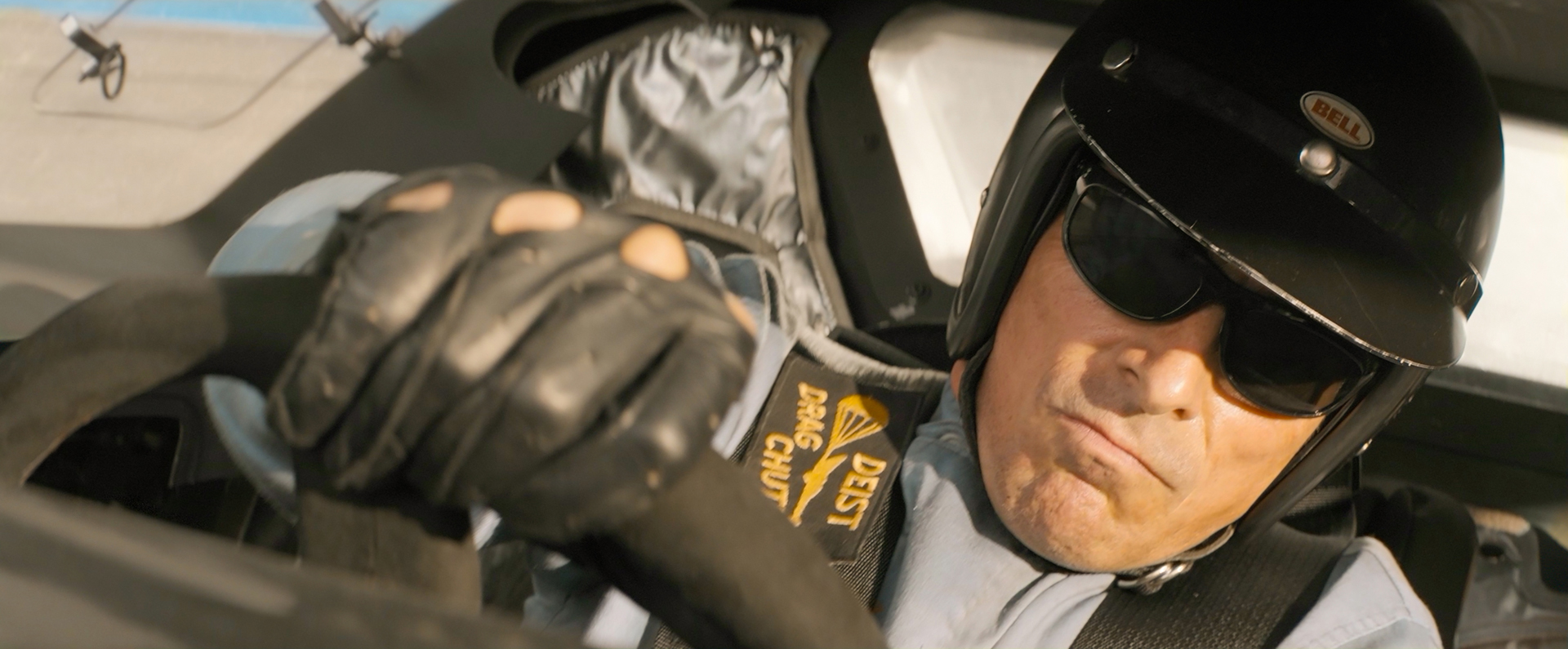
HULLFISH: On those earlier races what was the approach? How did you try to build those scenes? Was it just creating selects from the great moments that you saw?
BUCKLAND: Yeah. I think especially the Willow Springs Race was shot in a more traditional way in terms of covering the race with as much footage as we can. There may be specific moments that we want to include in the race — like specific beats — we’ll get those. So basically out of that footage, we worked on creating an experience of a full day’s race.
It took some time to figure that out. There were a lot of selects. There was a lot of combing through the footage — finding great shots of the car, of Miles. In the scene he’s yelling to a driver next to him — Bob Bonderon — he’s telling him, “Watch for that corner.’” And that wasn’t scripted, I don’t believe. That was something that Christian Bale came up with on that day, that he was going to yell and scream at the other drivers, which was great. Finding the right moment to have Miles do that.
HULLFISH: Was it selects or did you find that you needed to break things up in sub-clips and put them in bins where you could see them?
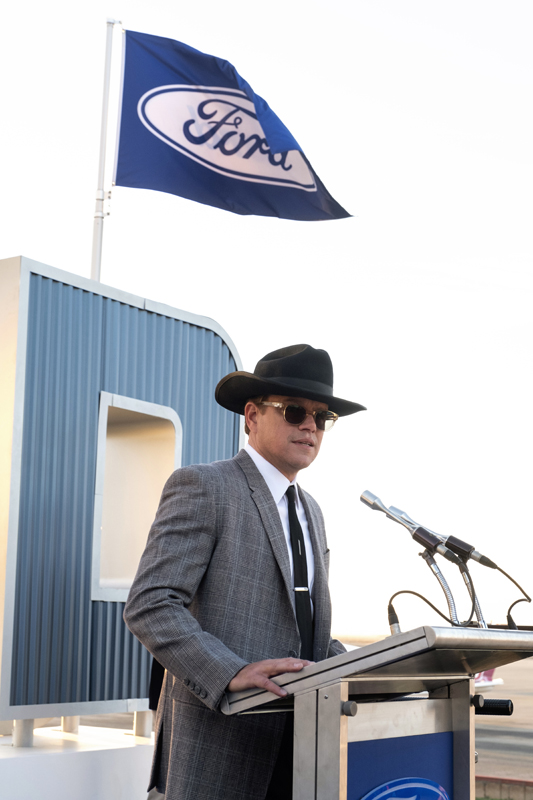
BUCKLAND: They did shoot material of Shelby. Shelby was in the pits. He was talking to that reporter and he was in the crowd picking up a wrench and there were crowd shots and it was figuring out those beats and then around those beats, you have Miles. And so what is Miles going to do at this specific time to elicit this reaction from the crowd? Once we sort of established that flow — that rhythm within those sections between the pits and the audience reaction — then within those moments you go and you select the great moments, the great shots, you build a moment of him overtaking that car and then the crowd reacting to it. And then when we come back we have the internal moment and then the car blows up and then that’s another break which is a great opportunity to sort of have a little time jump moment where we go to the flags and we establish time has passed — the race is continuing — which is the sort of the third act of that scene, where finally Miles is neck-and-neck with the lead car and that’s the end of that racing section.
HULLFISH: One of the interesting concepts you brought up is that the scene has acts to it. Does that help you compartmentalize some of those longer scenes?
BUCKLAND: It’s very helpful to think that way.
McCUSKER: When you’re putting a scene together, anything scene like that together the first time and it’s loose like that, sometimes you’re tasked with creating the structure. And when your tasked with creating structure and you feel good about it the next sort of hair-raising moment is showing it to the director and seeing if he agrees with that structure. So those are always the scenes that cause me the most anxiety because I know I like it but I hope they like it.
Le Mans and Daytona… I can’t really talk about Le Mans that way because Le Mans was actually shot so specifically but they Daytona — I’ve talked to you about this in the past, Steve — I don’t really like to use select reels. I really don’t. I try to stay away from them because I feel like when you go through raw footage and pick a bunch of selects and put them into a timeline two things happen: One, you get focused on the select timeline and you don’t reconsider the stuff that was in the actual dailies. Subconsciously you think you’ve picked the best stuff, but that’s not really the case if you’re cutting the scene and things develop in a different way. So then, everything that you thought was gonna be meaningful before you ever started cutting is no longer meaningful and if you don’t force yourself back into the dailies then you’re not necessarily picking the best stuff anymore.
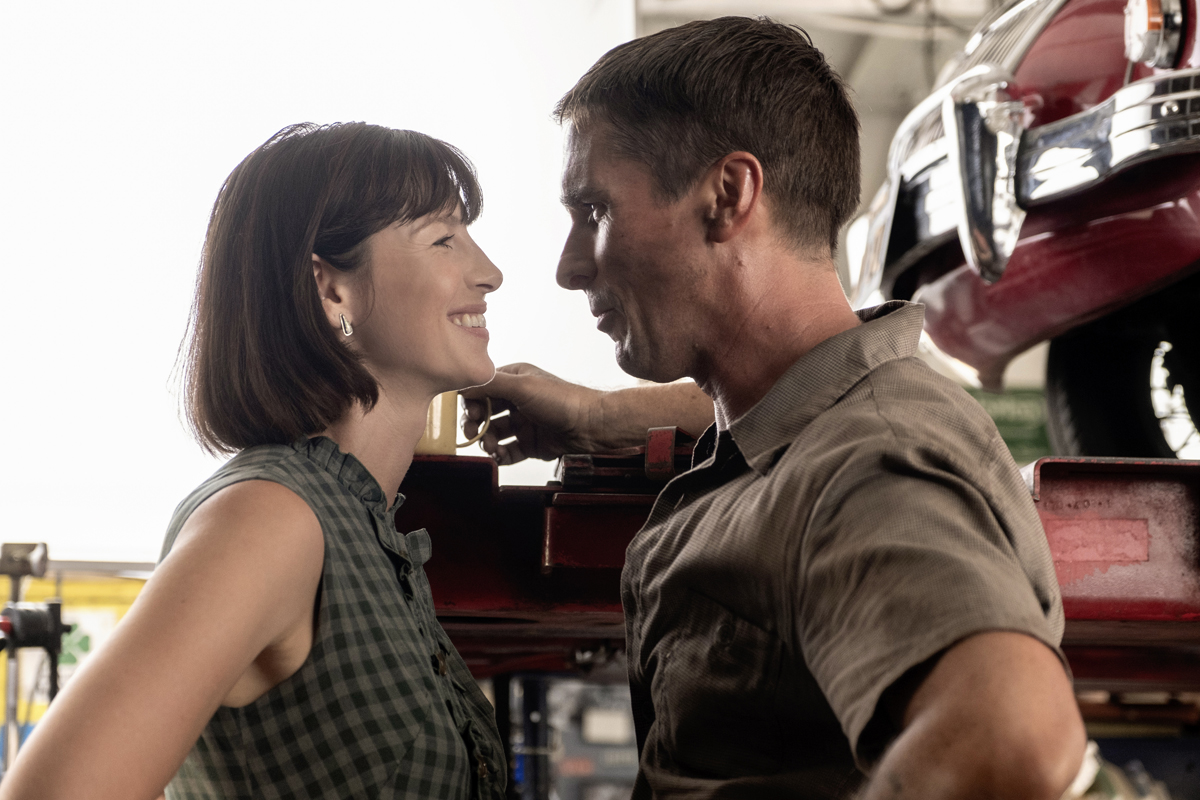
The way I like to work is I take great pains to set up my bins. I don’t have my assistants organize my dailies and bins. They’ll hand it to me as kind of just everything in a bin and then I’ll break it down. I’ll break it down — depending on what kind of scene I’m cutting or the complexity of the scene — I’ll break it down into beats of the scene or I’ll break it down and sort by screen direction, or I’ll break it down by shot sizing. It depends on which way I decide to attack the scene.
The only time I really go into creating select reels is when I’ve got some particular piece of action that has been shot a lot and then I can get through all of that and I can see which one I feel is the best or I can review it with the director really quickly. But I also markup my dailies like crazy. I put a ton of markers on everything.
I’ve only come to this having cut for a while where — when I pick selects — I would say, “Here are my selects.” And I start cutting the scene but then I realize, “The scene just pivoted in a different direction. Let me go back to my selects reel.” But I didn’t select the right things now that I’m thinking of the scene THAT way. So I gotta go back to dailies. I feel like it hems you in too much, at least for me.
BUCKLAND: I follow the same method. When I say “selected reels” I was thinking of using markers to select great moments within that take, but I don’t sub-clip them out and put them in a bin.
HULLFISH: And are you just hitting the marker where you see something visually? Or are you actually labeling those markers and using a marker window to say, “Oh, here is ‘rounding the turn at White House’ or passing somebody?”.
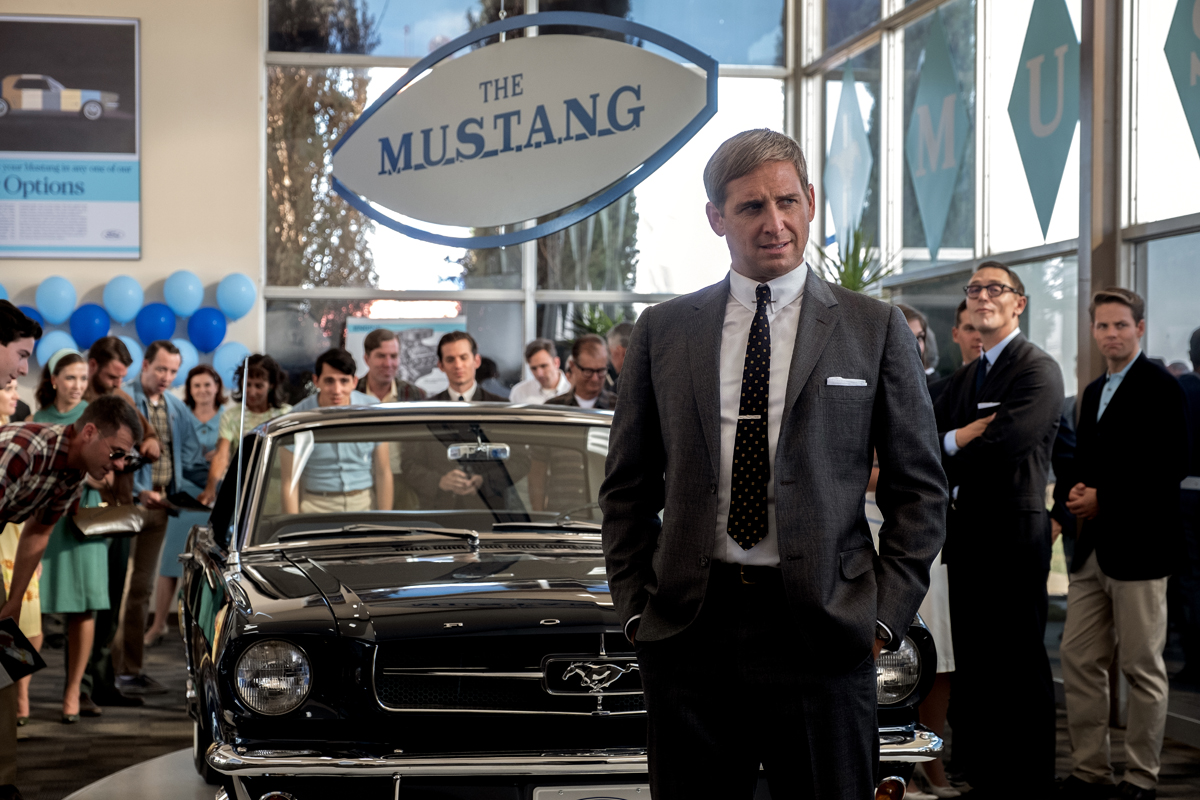
BUCKLAND: You brought up a great example. On the Willow Springs track, there are specific numbered turns that are famous. And so I initially organized my bins in terms of the different numbered turns. That’s how I originally organized it. And then I stopped doing that and I began to reorganize it in terms of the beats that I wanted to incorporate in the film.
HULLFISH: So are you sub-clipping all those moments? I would think the master clip chases a car through an entire lap, so then are you breaking beats into sub-clips?
BUCKLAND: I’ve watched the whole take. I marked the moments within that take so I can go back to it quickly.
HULLFISH: So if you’re looking for Turn 9 you can go to a marker for Turn 9?
BUCKLAND: Yes.
HULLFISH: Just a kind of film grammar question. How much do you guys think specifically about the lens, the size of the frame, as grammar? Or is it much more organic than that?
McCUSKER: I think you used a great word. “Organic.” (laughs).
BUCKLAND: When you’re in a scene and you’re in a close-up — for example — and you’re in a very emotional moment between two characters, to go wide just feels wrong. It feels like this is not the place to be. You still want to stay close to these characters. It’s organic that way, when you’re feeling a scene you respond to it a certain way. I respond to it more intensely if the size of the frame corresponds with my emotional response to the scene.
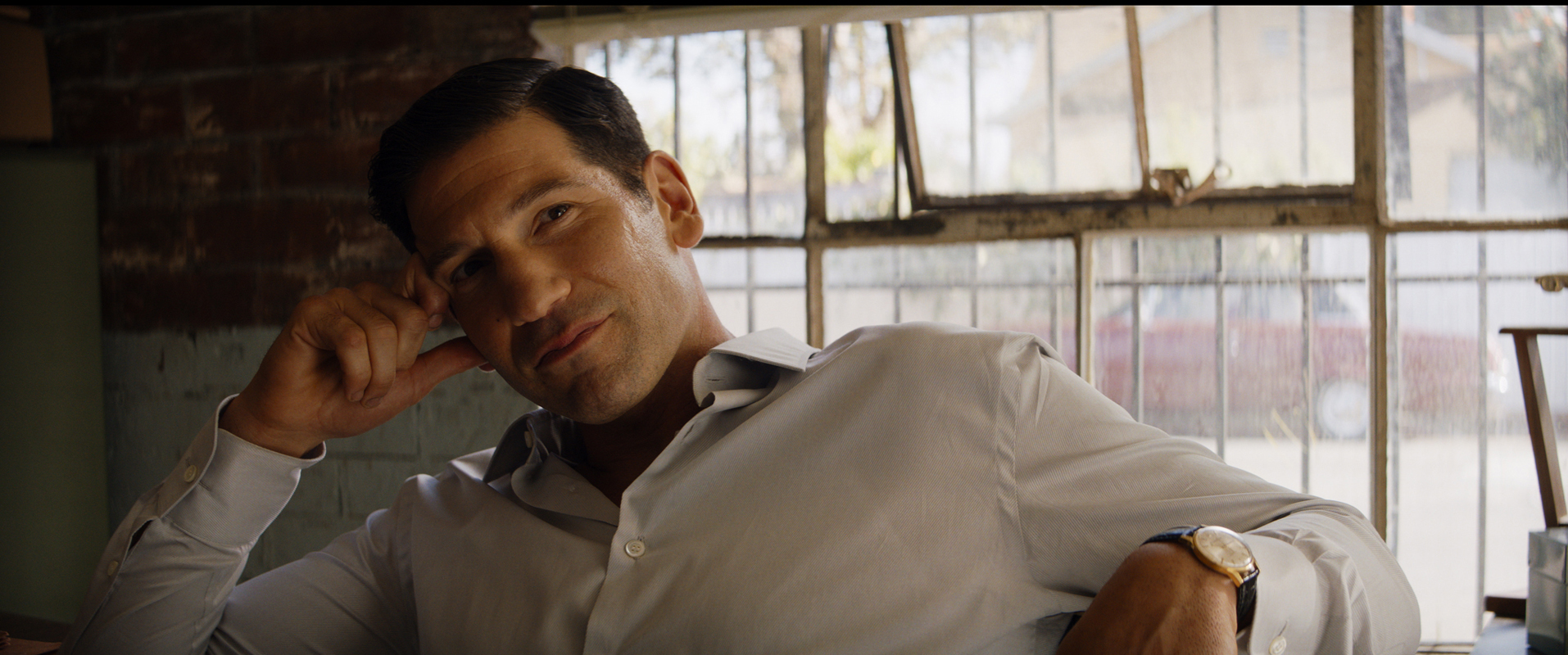
McCUSKER: In drama scenes, I’m very, very sensitive to shot-sizing in terms of being consistent when you’re working across several takes. Depending on the filmmaker and the cinematographer it’s different. There are some filmmakers and cinematographers once they go in and establish their shot sizing, they just kind of lock it down and stay there so no matter when you’re cutting you’re always in that space.
Jim and Phedon have more of a live frame, so they are consistent in terms of being in close when they need to be in close, but it’s not always consistent take-for-take. The camera’s in the space with them. It’s got a liveliness to it which I really appreciate, but sometimes that creates a problem because you’re like, “OK, I’ve gone to the other take to find the better shot delivery and suddenly now I’m wider” and so that shot-sizing throws me as an editor because why am I pulling out at a dramatic moment? It might not even be a dramatic pull-out it’s just a little little bit looser shot. So that’s where I’ll take the liberty of resizing the frame a little bit and making it more consistent with the previous take. So that’s kind of the way I work.
I don’t normally like to get into scenes off of masters. I like to jump into the middle of whatever is there. It’s kind of like the idea of dramatic structure for a script. How deep into the story can you start? I feel that way about scenes too. How can I jump into the middle of scenes? How late can I get into it and still then tell the story and then show some scope later on in the scene in a place that’s either somebody moving through space or dramatically demanding that you come out and show space? That’s how I usually attack scenes and sometimes I’m wrong sometimes I have to go traditional but that’s the way I’ll attack it.
HULLFISH: But you’re not even talking about trying to cut a bunch of lines out of the beginning of the scene. You’re saying visually speaking you approach it as if you’re in the middle of the scene. That’s interesting.
There’s a great scene that I call the “going to war” scene when they basically bring Shelby in to fire him and he has a conversation with Henry Ford II. Ford points out the factory where they build all these WWII airplanes and now he wants Shelby to go to war.
There are great reaction shots in that scene. How do you decide on those reactions? Do you cut the scene together as a conversation and then say, “a reaction would go great here” and then look for a specific reaction? Or are you constructing the scene more organically than that?
McCUSKER: I’m actually very proud of that scene because it’s basically my first cut. So that sounds like a whole bunch of patting my own back, but it’s a bunch of great actors in the scene, so it helps. That makes my life easier. I love scenes like that because everybody who’s got a stake in the proceedings is in the room together so where I pivot to the reactions is where the choir would be having a reaction like “WHAT!?” Like when Shelby talks about the folder, which is a bit of a dress-down to Ford, Ford’s there, but Ford is actually being stoic. He’s being essentially the king. Shelby’s in there trying to save his job. We know that Iacocca is his backer. Shelby’s making a slightly smart ass comment about a folder and Iacocca is thinking, “What are you doing? You should be begging for your job and you’re not.” That’s the subtext of what’s going on.
It’s just finding the moments where what Shelby is saying is weighted towards what particular character in the movie in that scene is important to them. Like when Shelby says, “Nothing that we did worked.” We cut to Beebe and his reaction is like, “you’re burying yourself.”
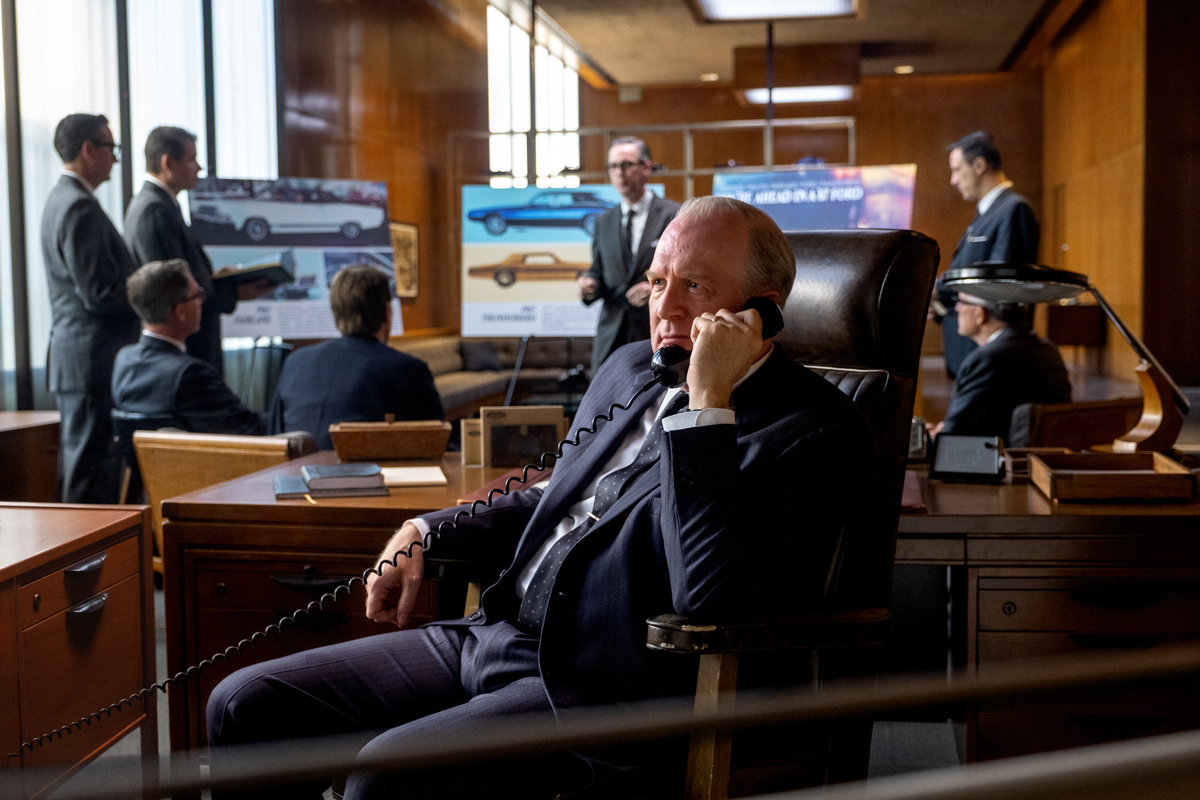
And what’s great about those reactions is they’re throwing the audience off a little bit because none of them are tilting towards “here’s where Shelby’s gonna turn it.” So when Shelby turns it and makes his point, he’s not setting it up in a traditional way to win this argument. He’s coming at it from this kind of odd angle to make his point in the scene. And so a lot of those reactions are sort of burned earlier in the scene and it really does just come into his direct connection with Ford at the moment he says, “Enzo’s never seen anybody go that fast.” That’s where the scene really coalesces to being just two guys.
BUCKLAND: I could have just cut it and just been about him and Ford but Ford wasn’t doing that much in the scene at the top. These other guys are all vested in this endeavor.
HULLFISH: It sounds like a little bit like that idea that you mentioned earlier of you acting like the audience. Somebody says something in a conversation and I wonder how this guy reacts.
McCUSKER: We’ll be watching scenes together. Drew will be watching my scene. I’ll be watching some Drew’s cut. John Berry — our visual effects editor — he cut a little bit on this movie. He actually got an additional editor credit on this. I will often be the one asking, “Well, what’s the other person thinking?” Like what you just said. What would that guy’s reaction be? I want to know what that guy’s reaction would be to that. When I’m cutting a scene I like to say, “I’m cutting it live.” Meaning I’m trying to live in the scene as I’m cutting it.
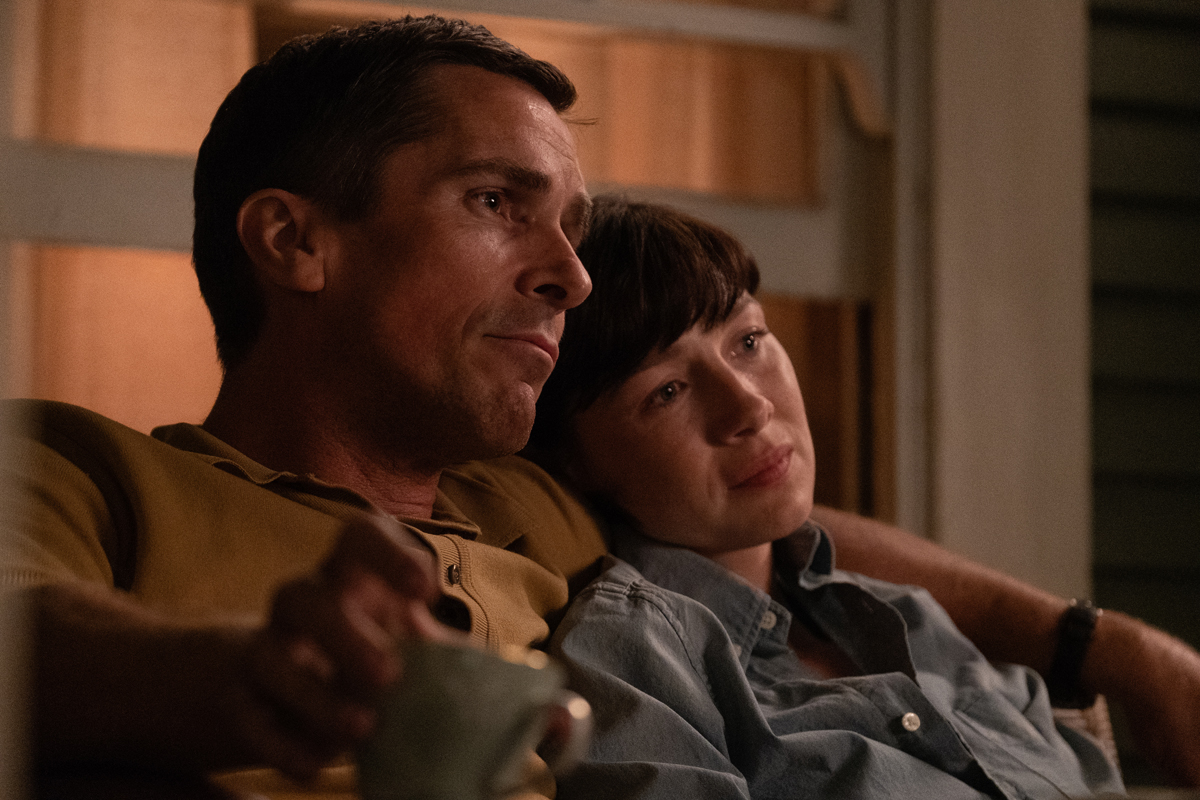
I have a hard time going through and looking at dailies and finding what I think are all the best pieces and putting it in the timeline and then trying to figure out the rhythm. I have to really cut from the top through as if I’m experiencing the scene. I’ve never really talked to other editors about that. Maybe they feel the same way, but that’s how I approach a scene.
There’s a good thing about that and there’s a bad thing about that. The bad thing about it is that because I’m looking at it almost like cutting live, I tend to be slow in my first edits. It tends to take me a while because I get really rigid – like I’m only going to cut this in for this long – and I have to remember to just throw it in a little long. And then go find the next piece and then you’ll find your pacing.
Don’t try to be perfect with each cut. Even after all these years of cutting I still sometimes find myself trying to be a perfectionist with the cut because I’m trying to feel the scene at the same time. You’re basically playing psychological games on yourself.
HULLFISH: Andrew your take on that?
BUCKLAND: I’ve adopted a lot of techniques that Mike has just spoken about because Mike and I have worked together for a long time and Mike has worked with Jim longer than I have and I’ve kind of come up with Mike — through Mike and Jim — I assisted Mike on a number of films so it was just a natural process of adopting a lot of his techniques.
McCUSKER: I think you’re better at being looser earlier. I’ve watched Drew cut and he’s able to get through scenes a little faster and a lot of ways than I am because he tends to not be so rigid in his first cuts. It’s good to go in and watch him sometimes. It reminds me to just relax and loosen up a little bit.
BUCKLAND: That is my process. I am loose and then I will go back and do my second pass where I will find the true rhythm of the scene in the second pass.
HULLFISH: Is there anything you want to talk about with those scenes that I sent you?
McCUSKER: I think the one thing that was interesting about that one scene that really establishes Miles’s character is his interaction with this inspector at the beginning of the movie where he’s frustrated with them and they have a confrontation. The scene was weighted towards Shelby and Shelby walking through the paddock and as that was happening what was happening with Miles was really just background. It was going to be more chatter. So Jim decided he needed to write an essentially off-screen scene that was a confrontation and then once he wrote it, he liked it a lot and shot it straight up and that became a scene unto itself. And it pivoted the scene towards Miles. So that sequence becomes more about Miles than it is about Shelby, and it should be because you’re really getting a taste of Miles’ hot-headedness and his oddities and his idiosyncrasies and it works very well.
HULLFISH: I see cards up on the wall behind you. Do you like to use scene cards up on a wall for an entire movie?
BUCKLAND: Sometimes it depends on the movie I think.
McCUSKER: It does. It was helpful a little bit in Ford versus Ferrari. His other movies are what I call “straight arrows.” The plotting is following one guy from A to B. And so you can put the cards on the wall, but you’re not going to restructure. Maybe you’ll lose scenes, but there’s not a need to figure out a different structure. Ford v Ferrari was a little different particularly at the beginning because there were some scenes that were shot that were cut out and restructured a little bit.
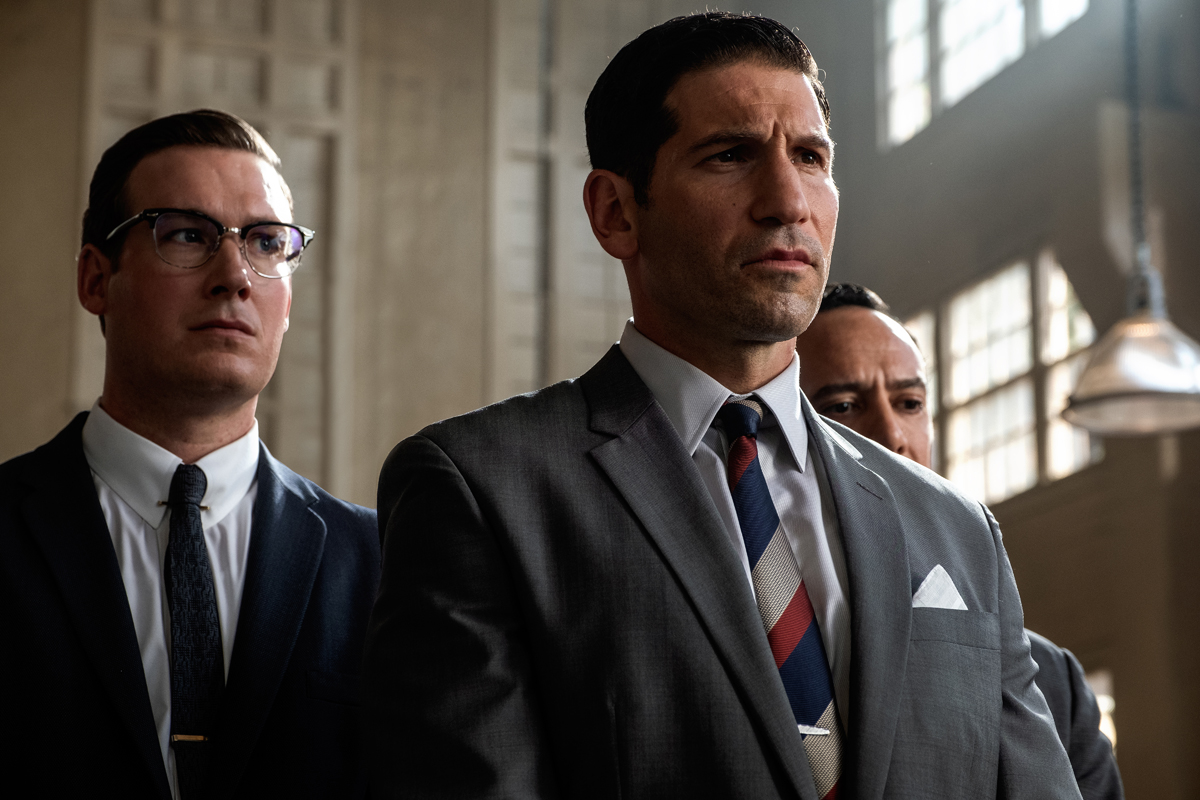
The challenge at the top of the movie was to know how much pipe did we have to lay for all the other characters before we got into Miles’ scene in the GT 40 for the first time? So it was helpful there. Movies that deal with memory; movies that deal with multiple characters; movies that deal with complicated plotting and a lot of A B stories; that’s where the cards become really helpful because you find yourself needing to restructure and you want to move things around on a board. So it depends on the movie. That’s a long answer to say exactly what Drew said.
BUCKLAND: Earlier you asked about wanting to just use a shot because it’s so beautiful. You made me remember there’s a moment in the scene where Molly drives Miles. We call it the “Molly joy ride” where she’s actually driving the car. And the beginning of the scene the camera’s in the back seat and we see them as a two-shot. We’re behind them and she says, “You came home late last night.” And his response was a kind of non-commital “nyeah.” as he’s beginning to eat his potato chips and that moment is my favorite moment in that scene because it just really reminded me of me in the back seat of a car watching my parents about to have an argument (both laugh) I just have to use this.
HULLFISH: That was the scene I was thinking of when I asked about music that crosses two scenes. I think the music from the previous scene overlaps into that scene, right?
BUCKLAND: And it becomes the radio actually of the car they’re driving.
McCUSKER: That music became a motif. We used it three times in the movie.
HULLFISH: You mentioned some book-ending that got pulled away to turn into a narration earlier in the interview. Can you talk a little bit about what happened kind of near the beginning and the end and any reshoots that might have happened or how you changed those scenes and why?
McCUSKER: The scene where he talks to Remington in the office that was shot after the fact, because what we were finding was the audiences in testing were loving the movie but they felt there was an abruptness. There was an abruptness after his death. We had multiple ideas that skewed away from what we’d originally shot. The voice-over that you’re talking about earlier in the interview it came right after his death and it was Shelby sitting in a bar having this real crisis of conscience and talking to some stranger because he’s had a few drinks and he doesn’t know how to process what’s gone on.
Then he leaves the bar and goes back to the hanger and grabs the wrench and goes and talks to the kid and it all felt a little confusing and labored and too on-the-nose. It didn’t feel like the movie. So we abandoned that early and then we started this idea of how do we establish “What is life without Miles for Shelby?” We had done some intercutting with footage we currently had which was a year later and he’s back at Willow Springs but Ken’s not there and it was kind of effective, but audiences were a little confused. “Why are we back at the beginning of the movie again?” That’s the way they were interpreted. Plus they didn’t really get the emotional space that Shelby was in. So Jim decided and the studio decided that we needed an extra scene. So we shot the scene where Remington talks about “fancy words” and established the fact that it’s been six months since Miles’ death. That sets up the talk with the son. It tees up that conversation in a way that works and feels real. WIthout that, the screening audience just felt it was too emotionally abrupt. So that’s where Jim was able to diagnose it and come up with a solution.
HULLFISH: Gentlemen, thank you so much for your time. It was wonderful talking to you.
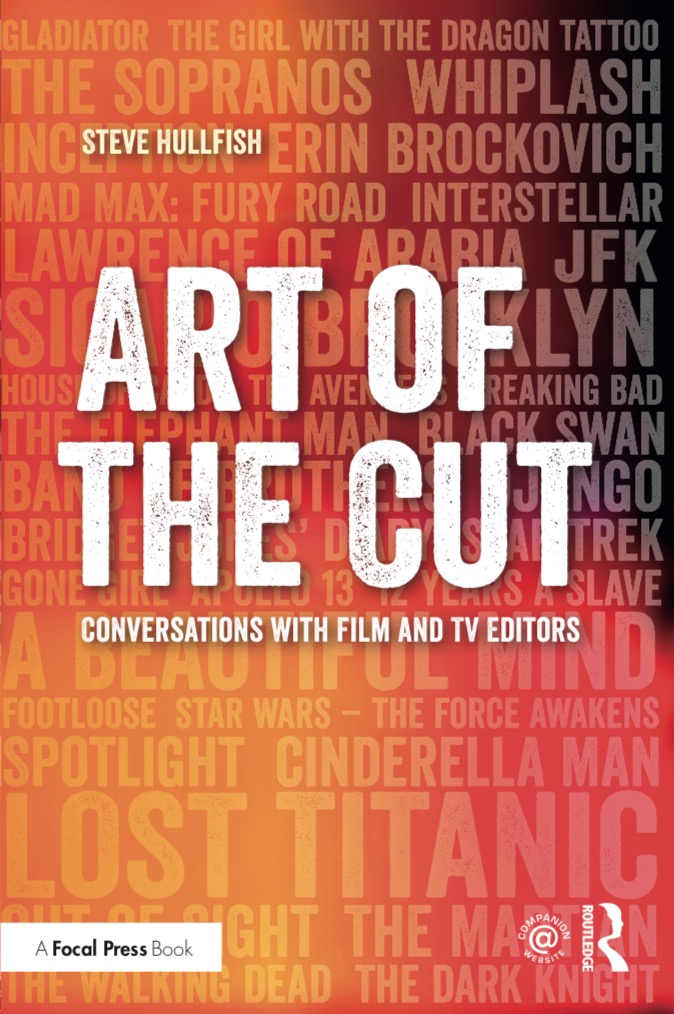
BUCKLAND: Great talking to you too.
McCUSKER: Thanks Steve.
To read more interviews in the Art of the Cut series, check out THIS LINK and follow me on Twitter @stevehullfish or on imdb.
The first 50 interviews in the series provided the material for the book, “Art of the Cut: Conversations with Film and TV Editors.” This is a unique book that breaks down interviews with many of the world’s best editors and organizes it into a virtual roundtable discussion centering on the topics editors care about. It is a powerful tool for experienced and aspiring editors alike. Cinemontage and CinemaEditor magazine both gave it rave reviews. No other book provides the breadth of opinion and experience. Combined, the editors featured in the book have edited for over 1,000 years on many of the most iconic, critically acclaimed and biggest box office hits in the history of cinema.

Filmtools
Filmmakers go-to destination for pre-production, production & post production equipment!
Shop Now